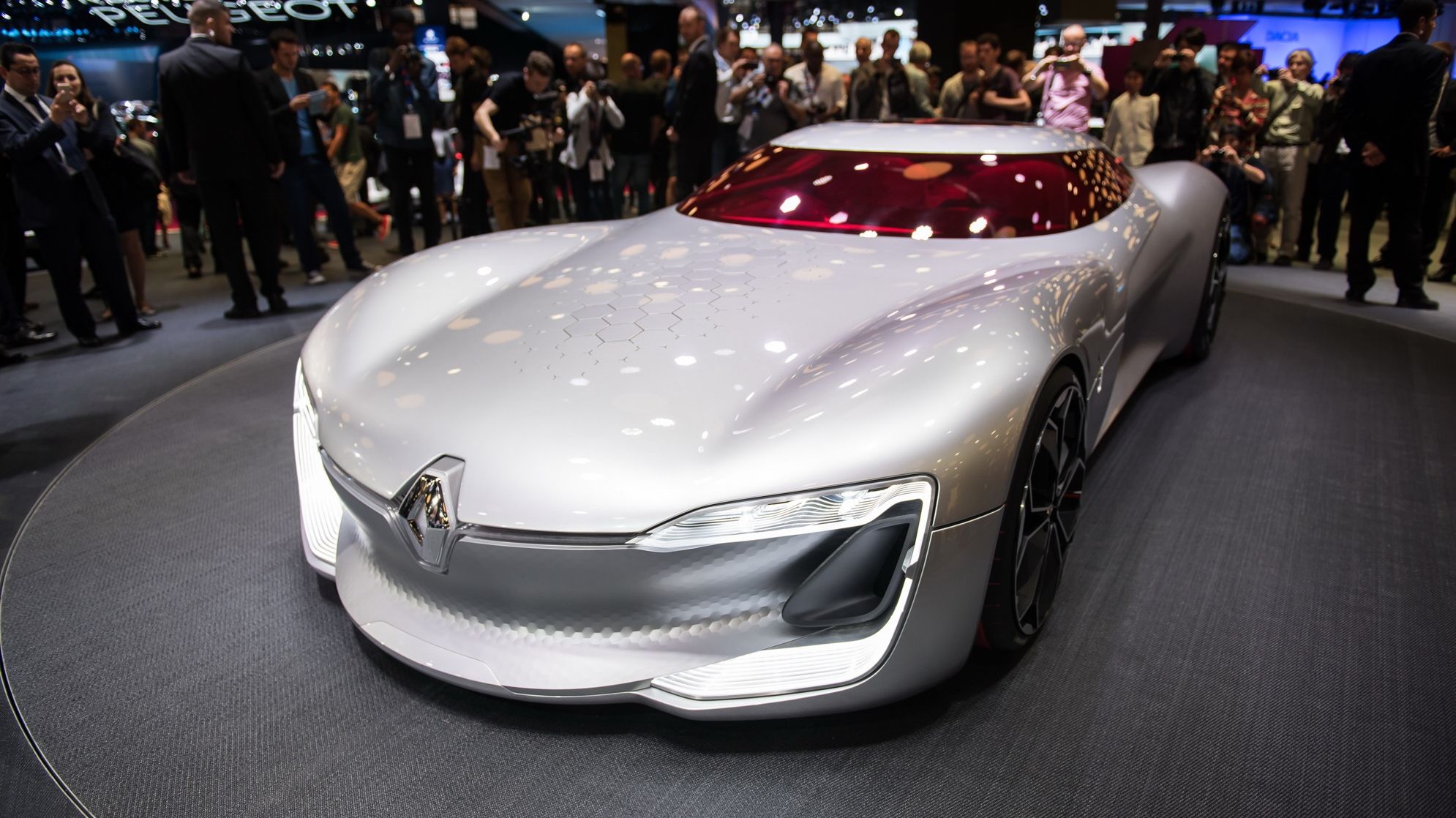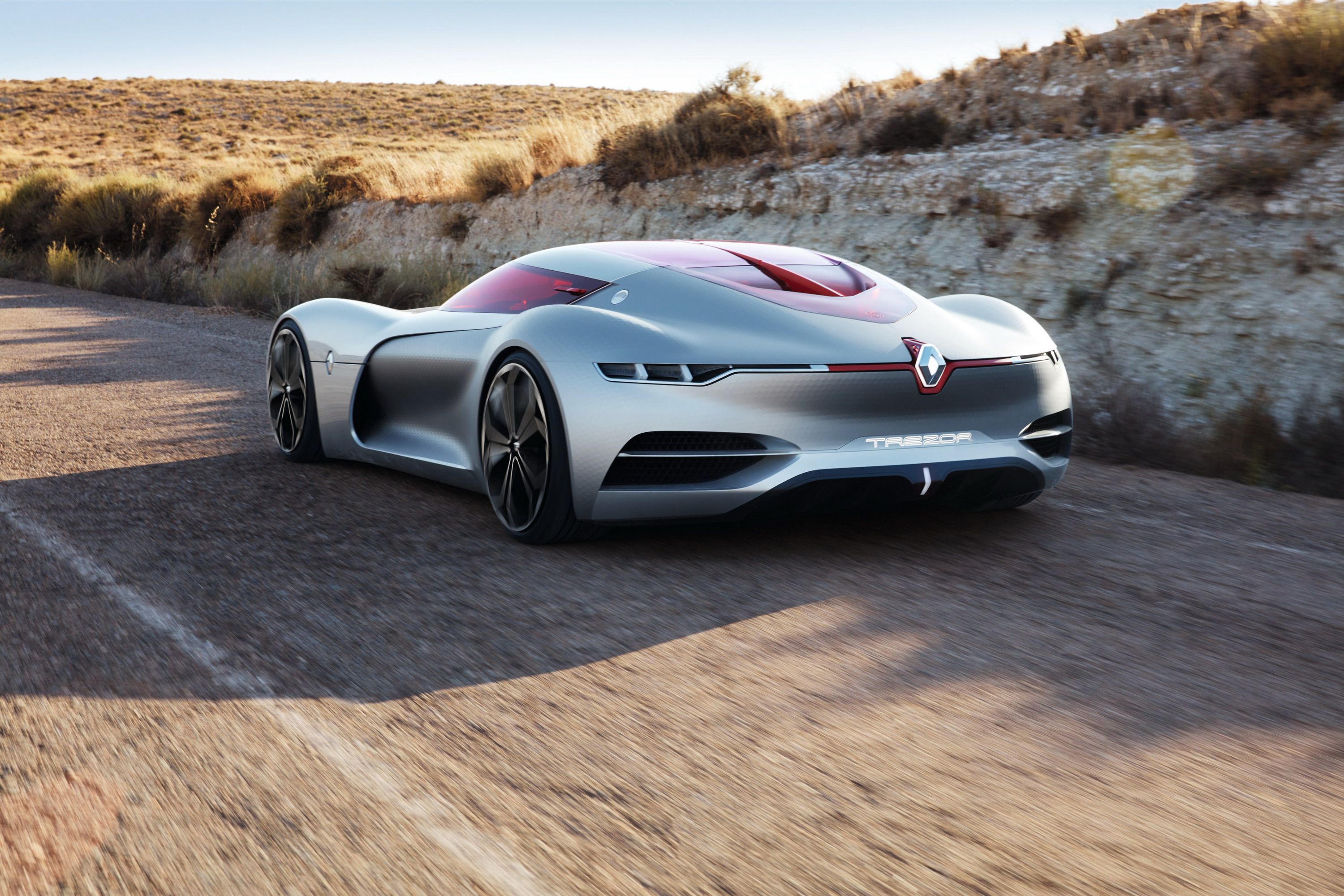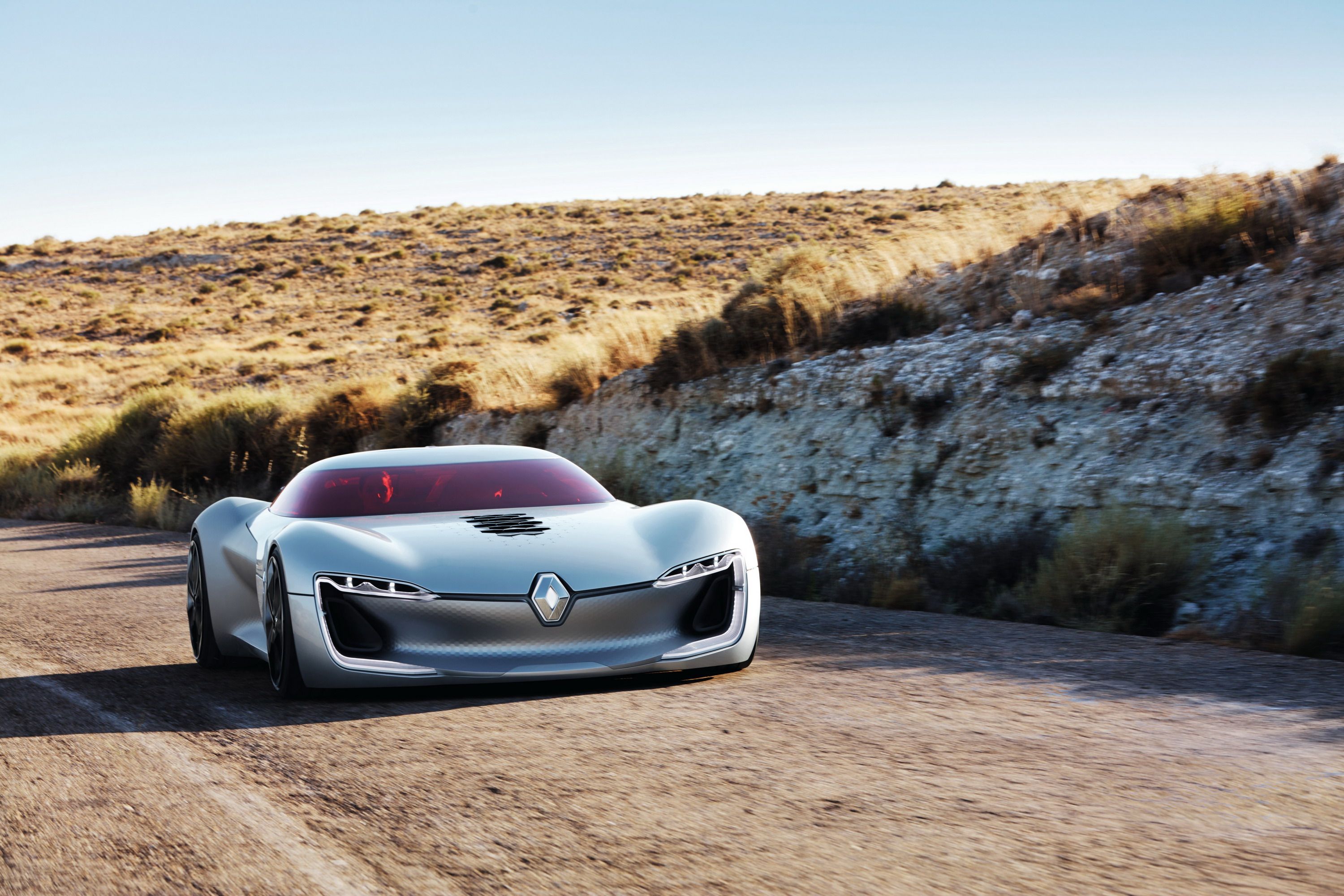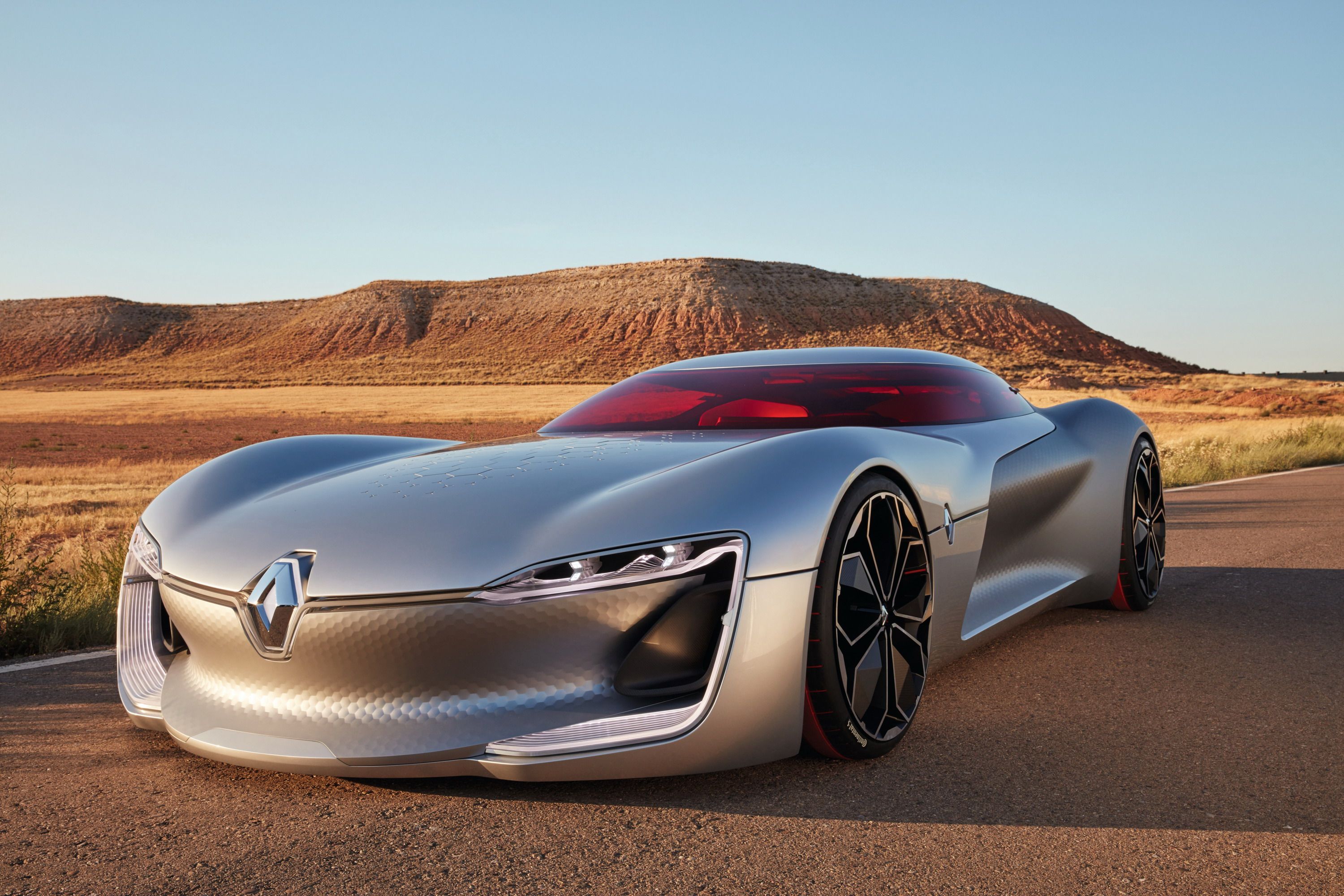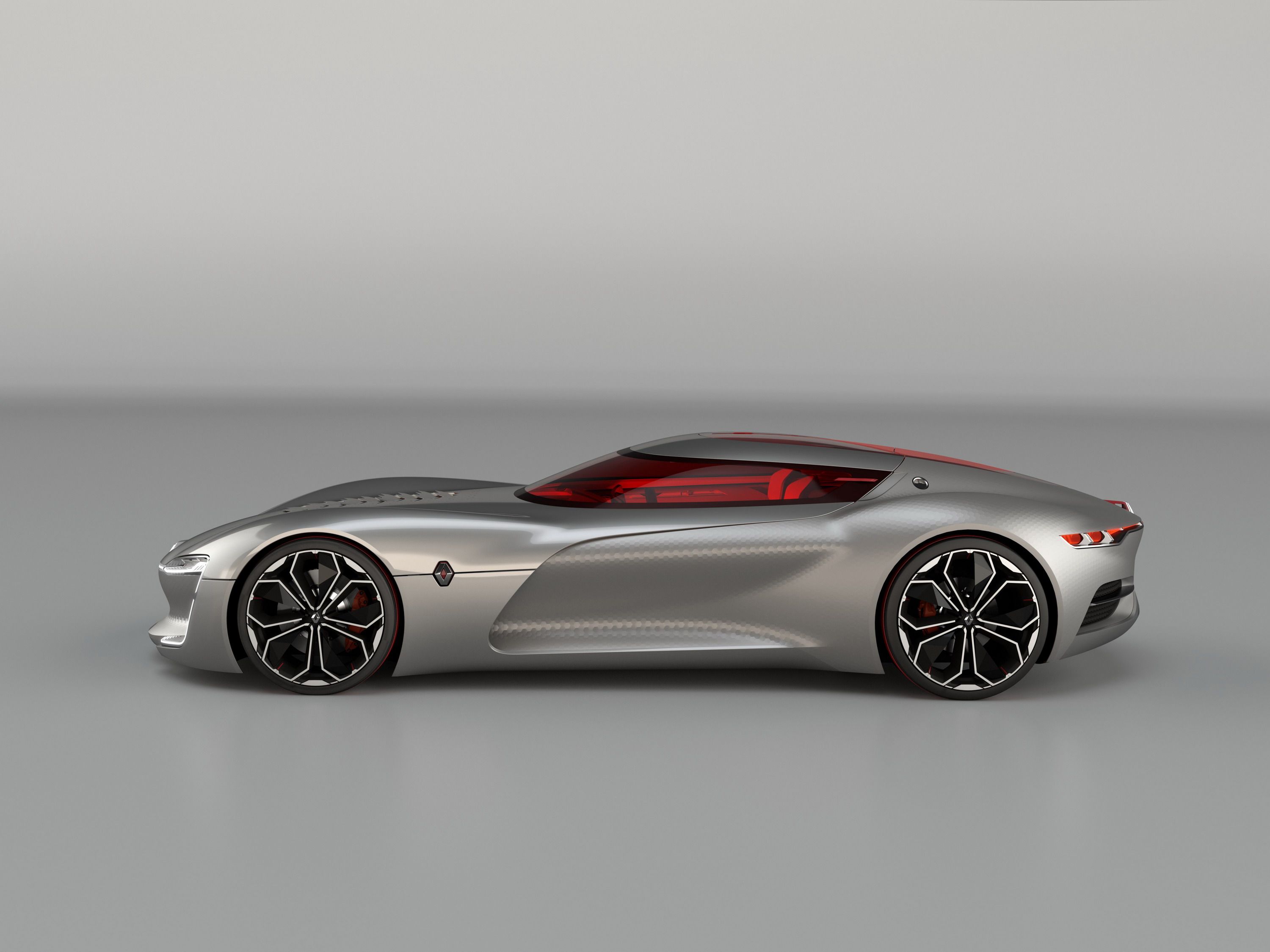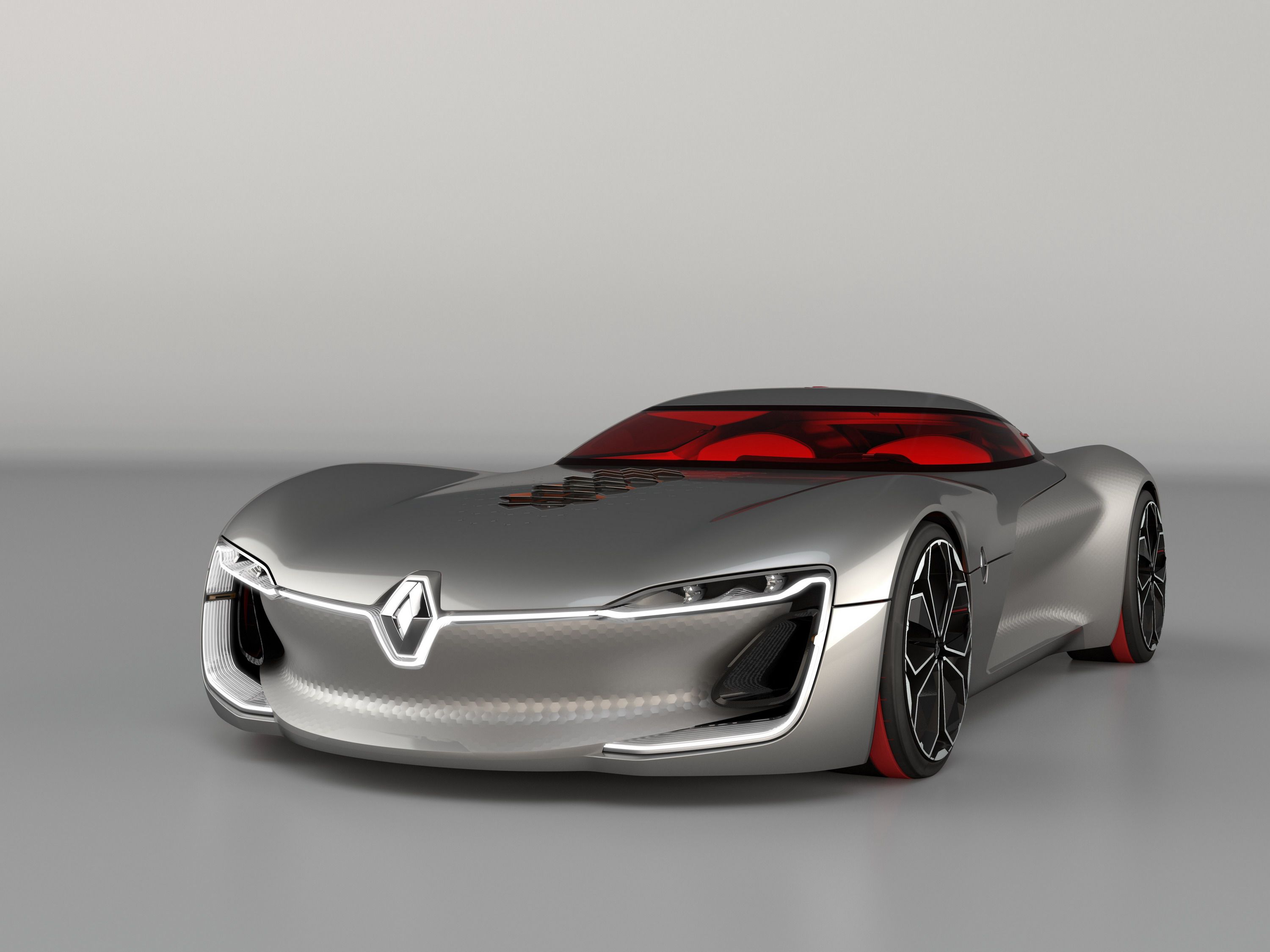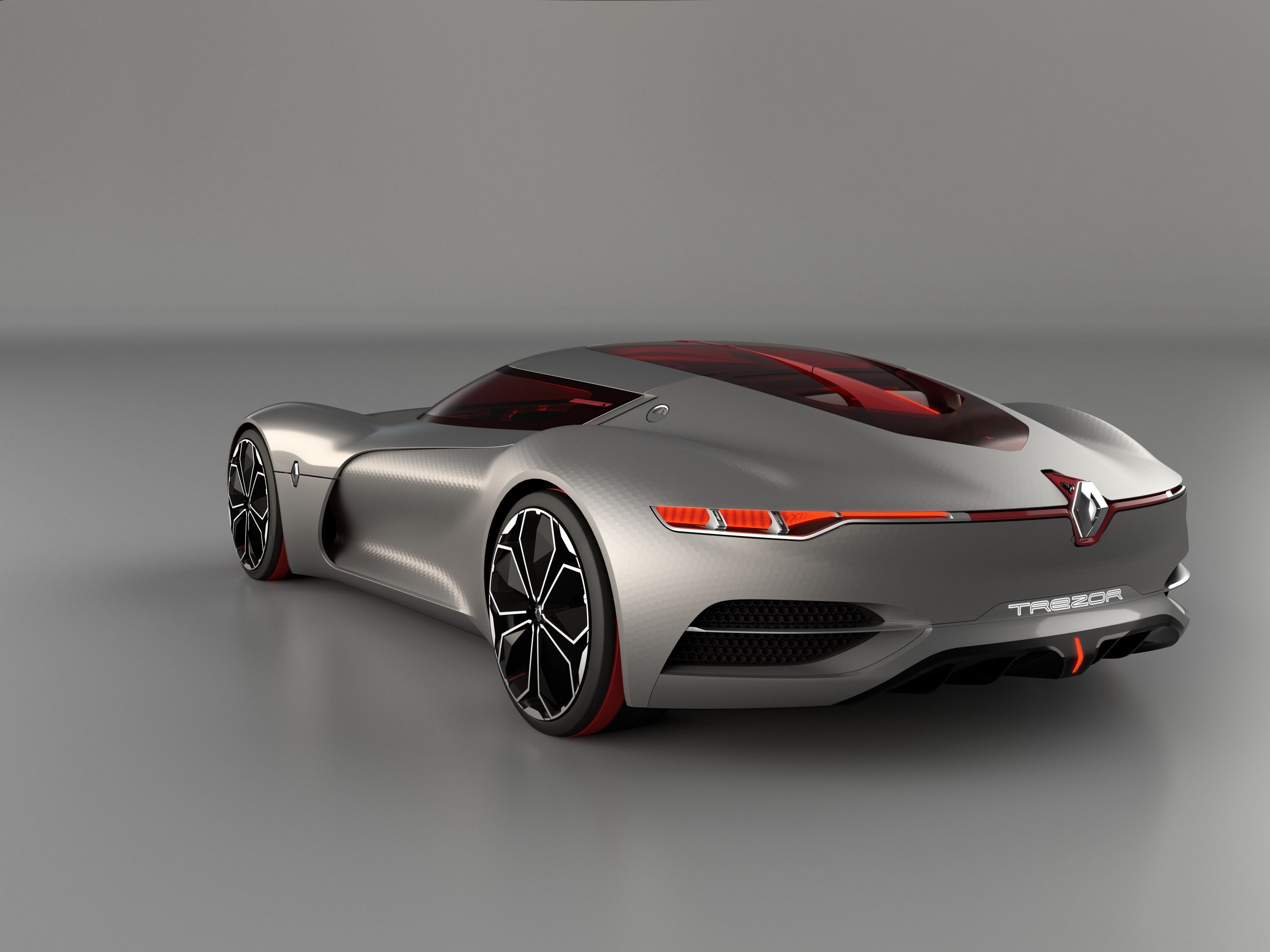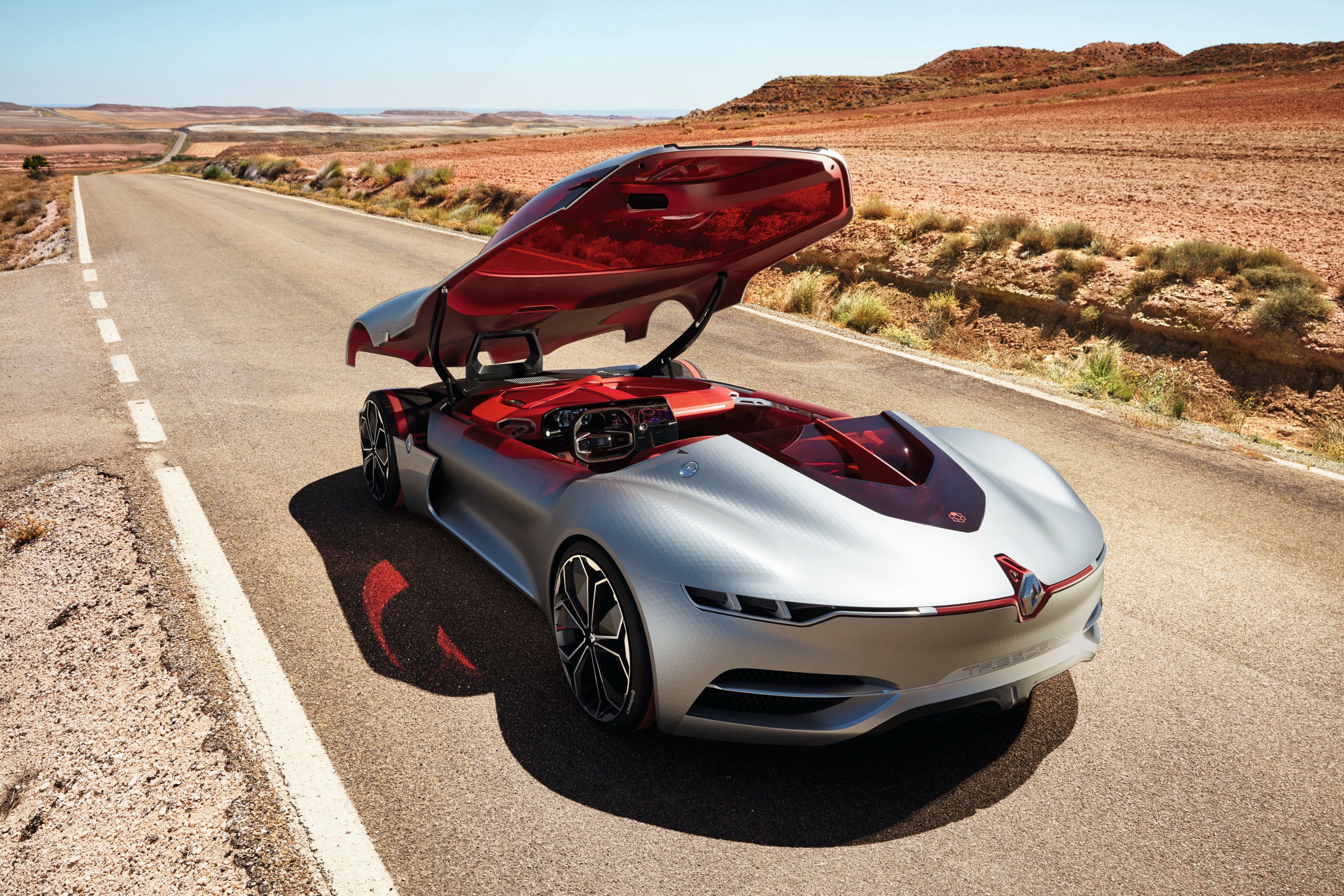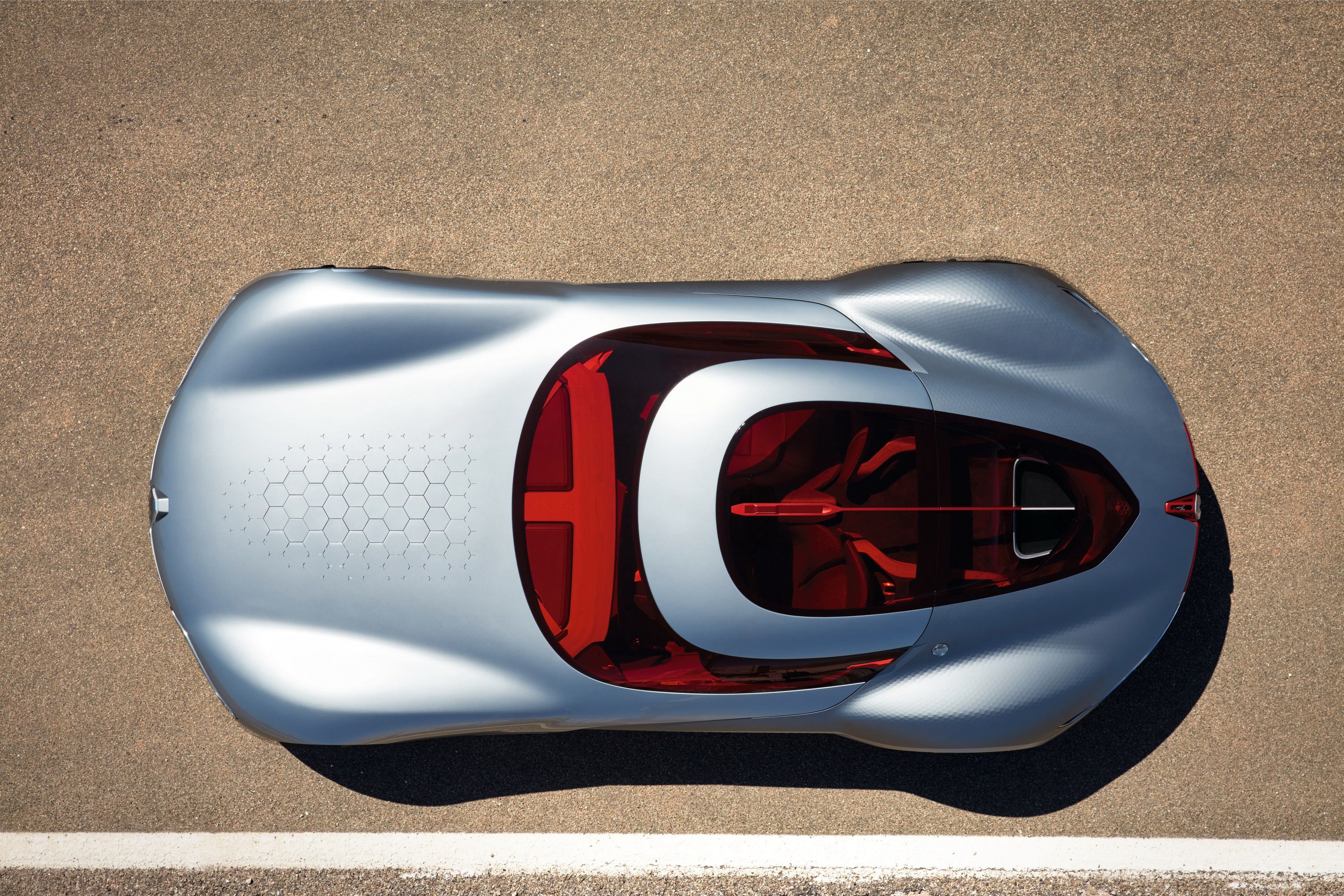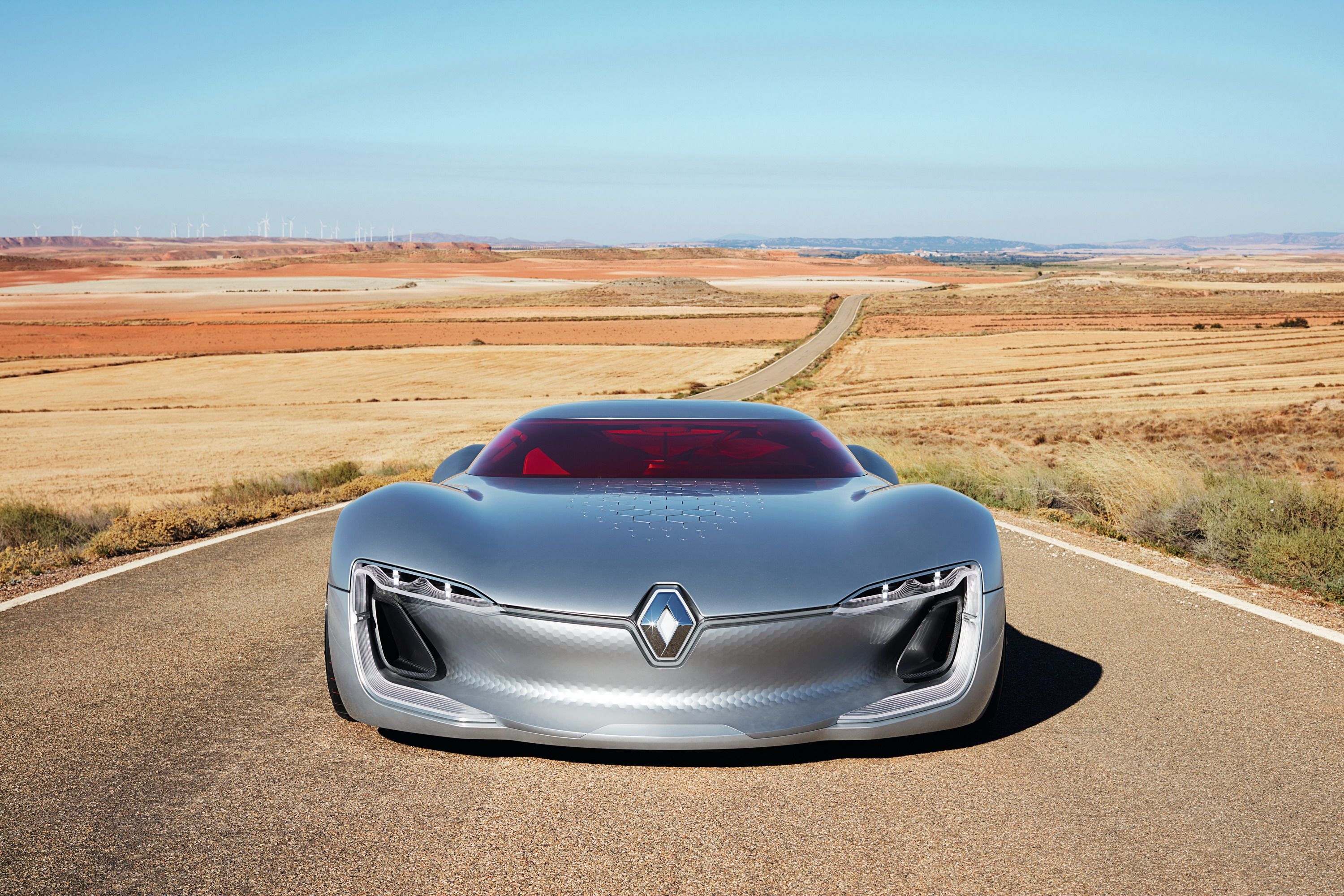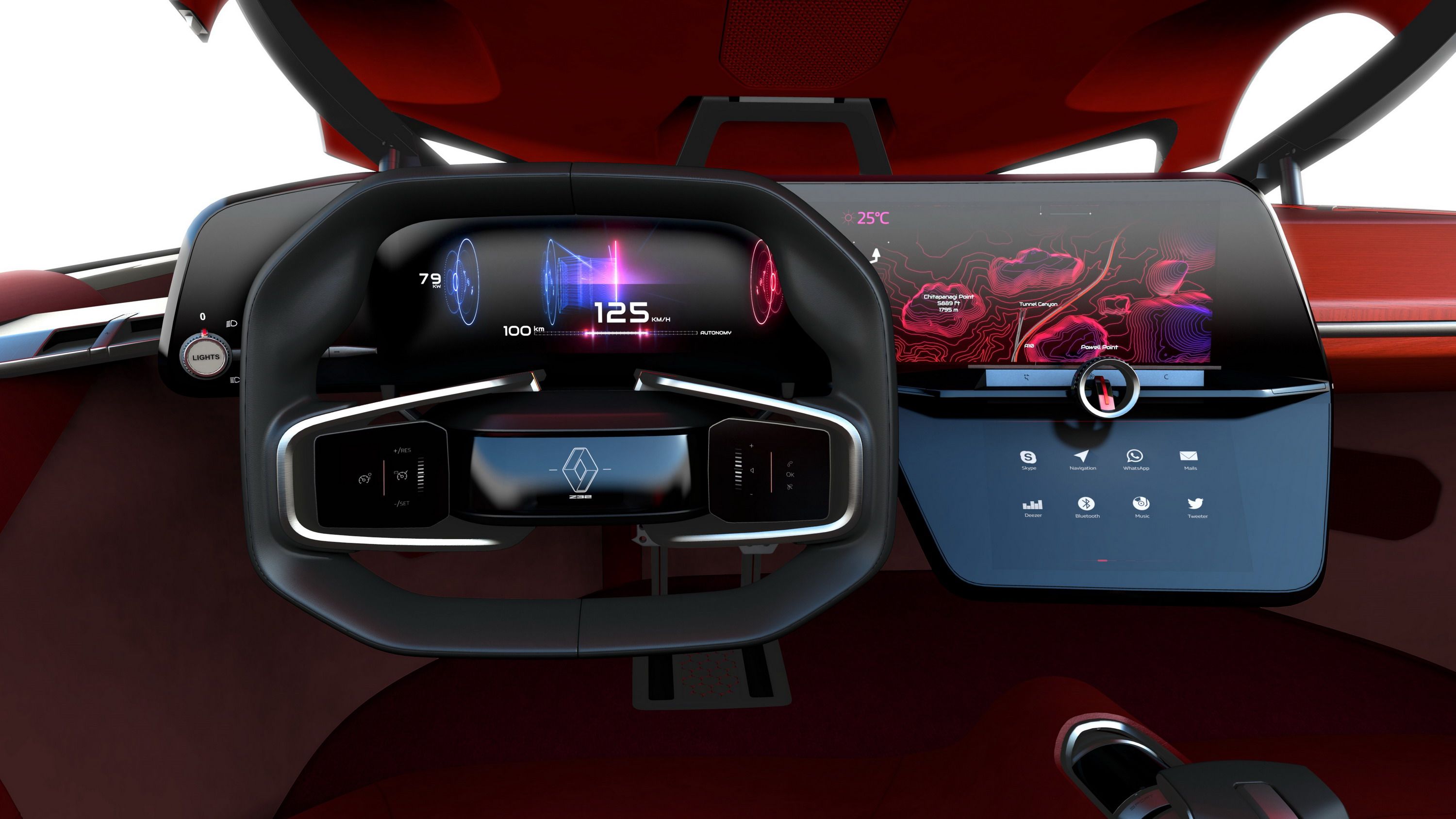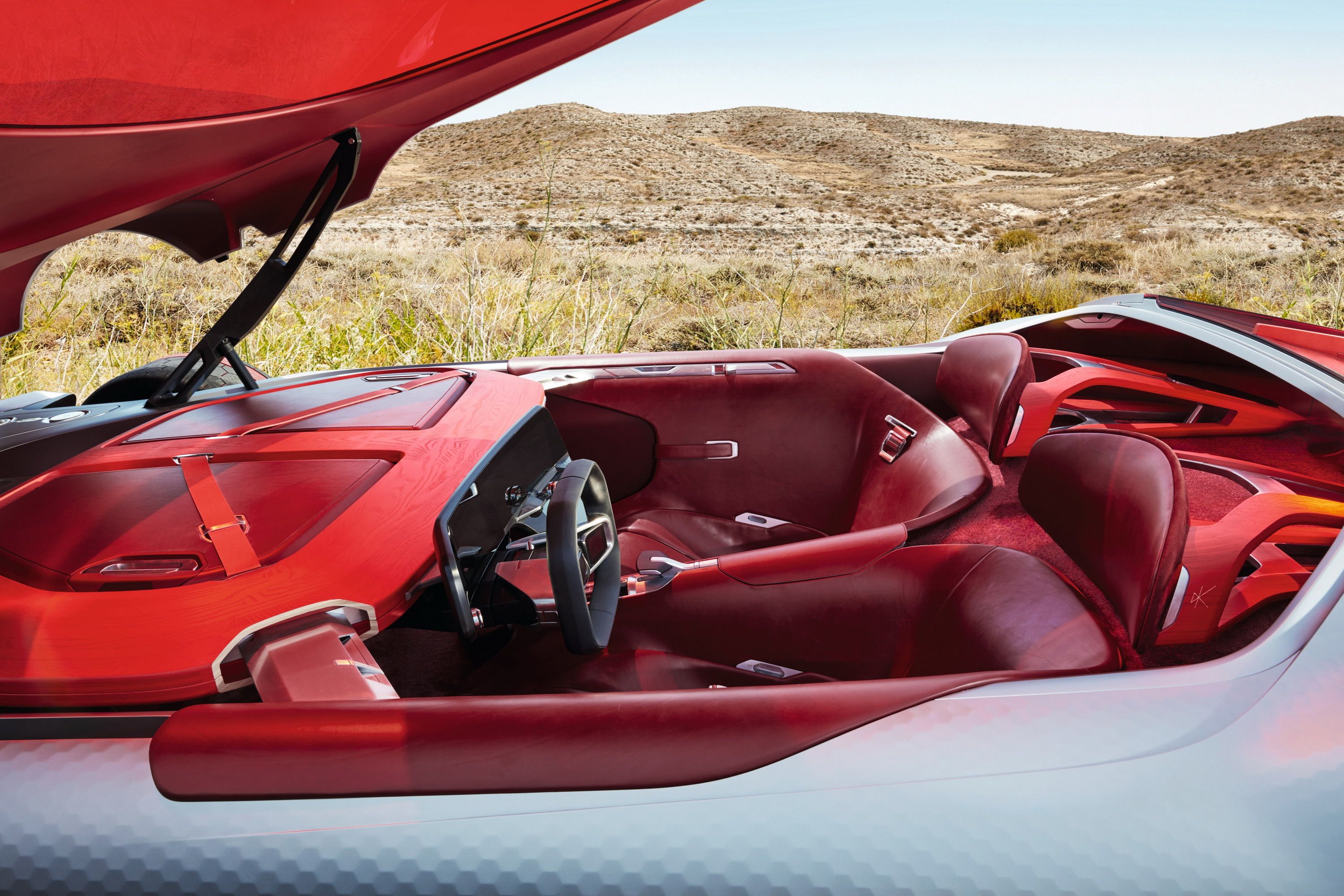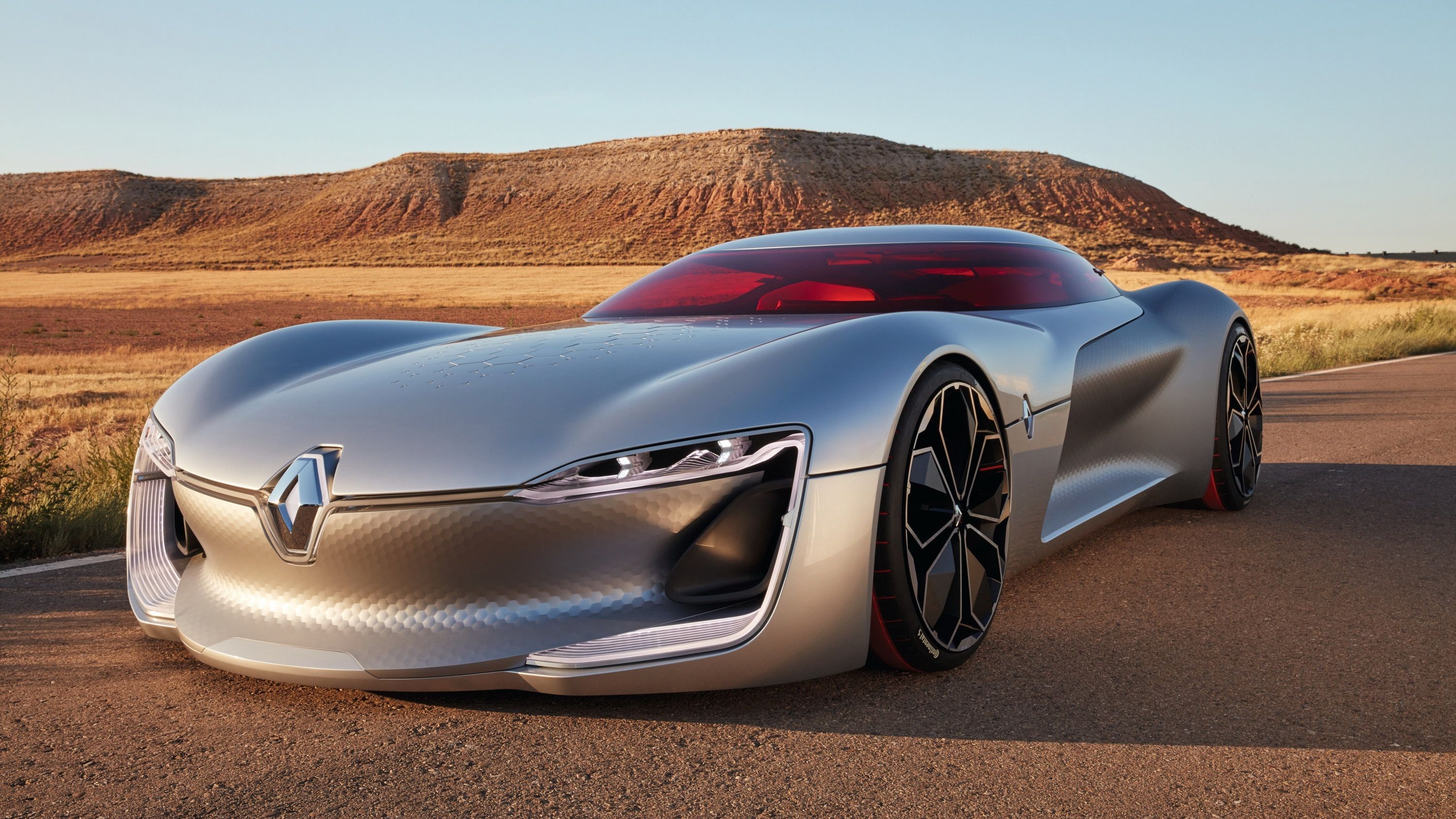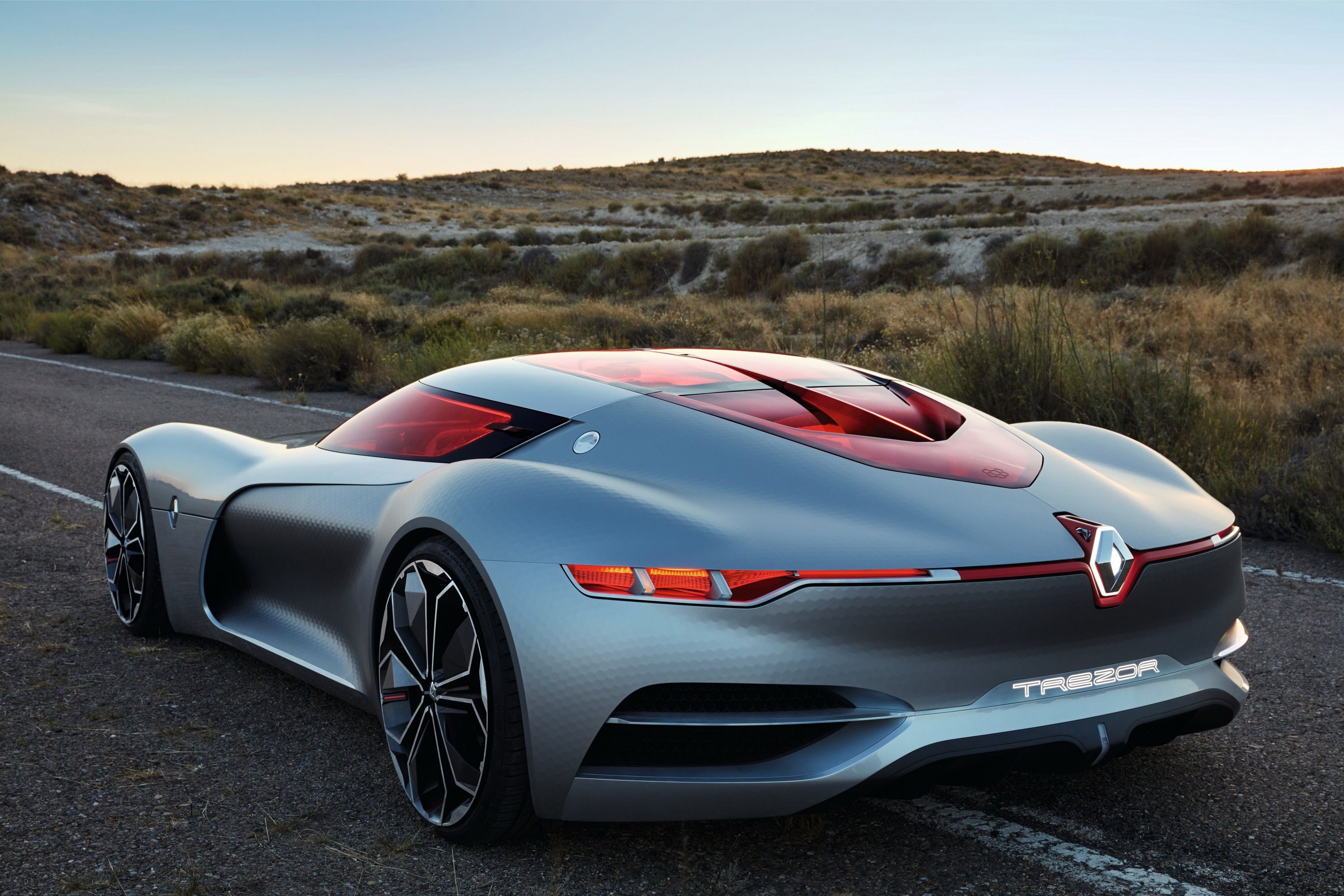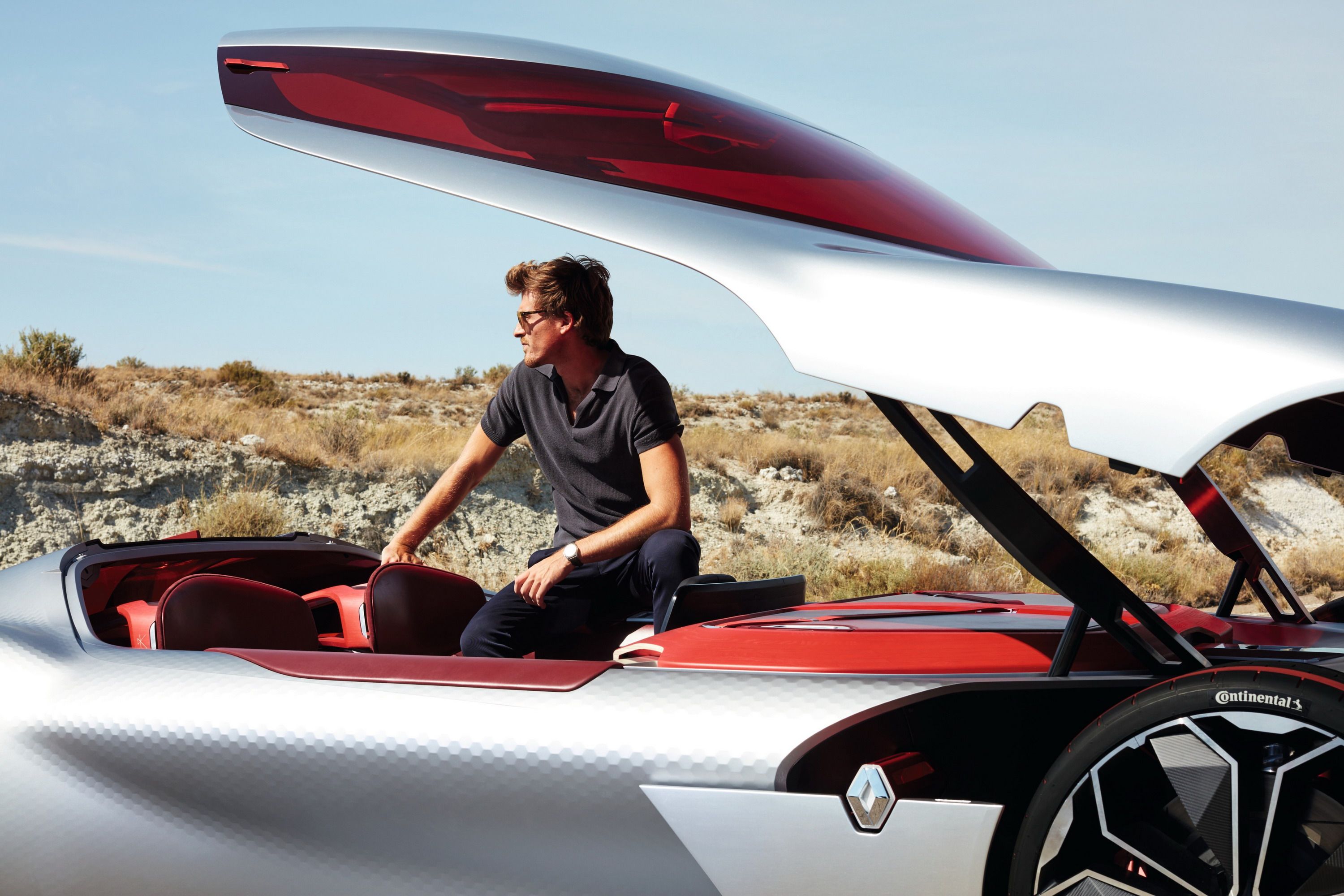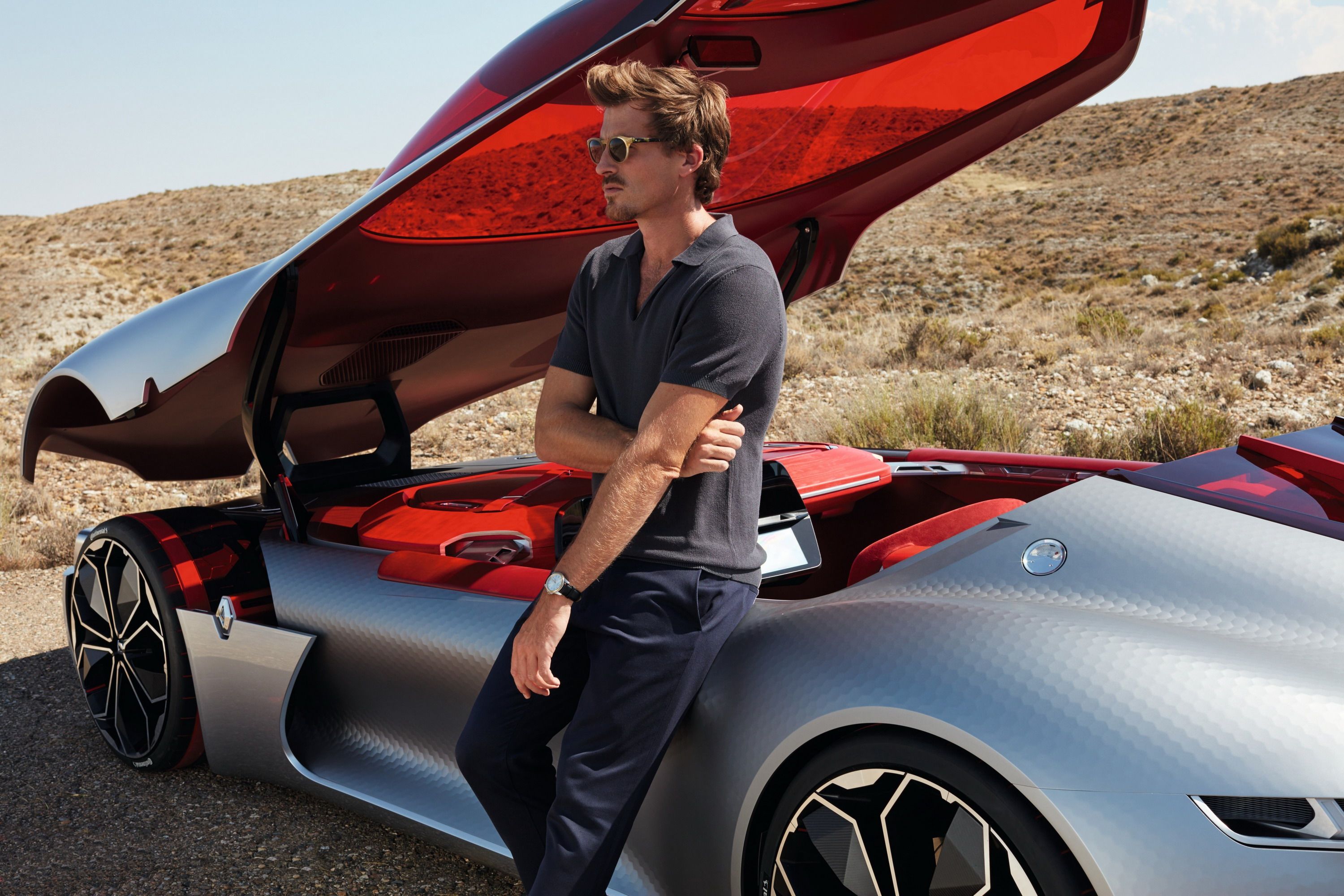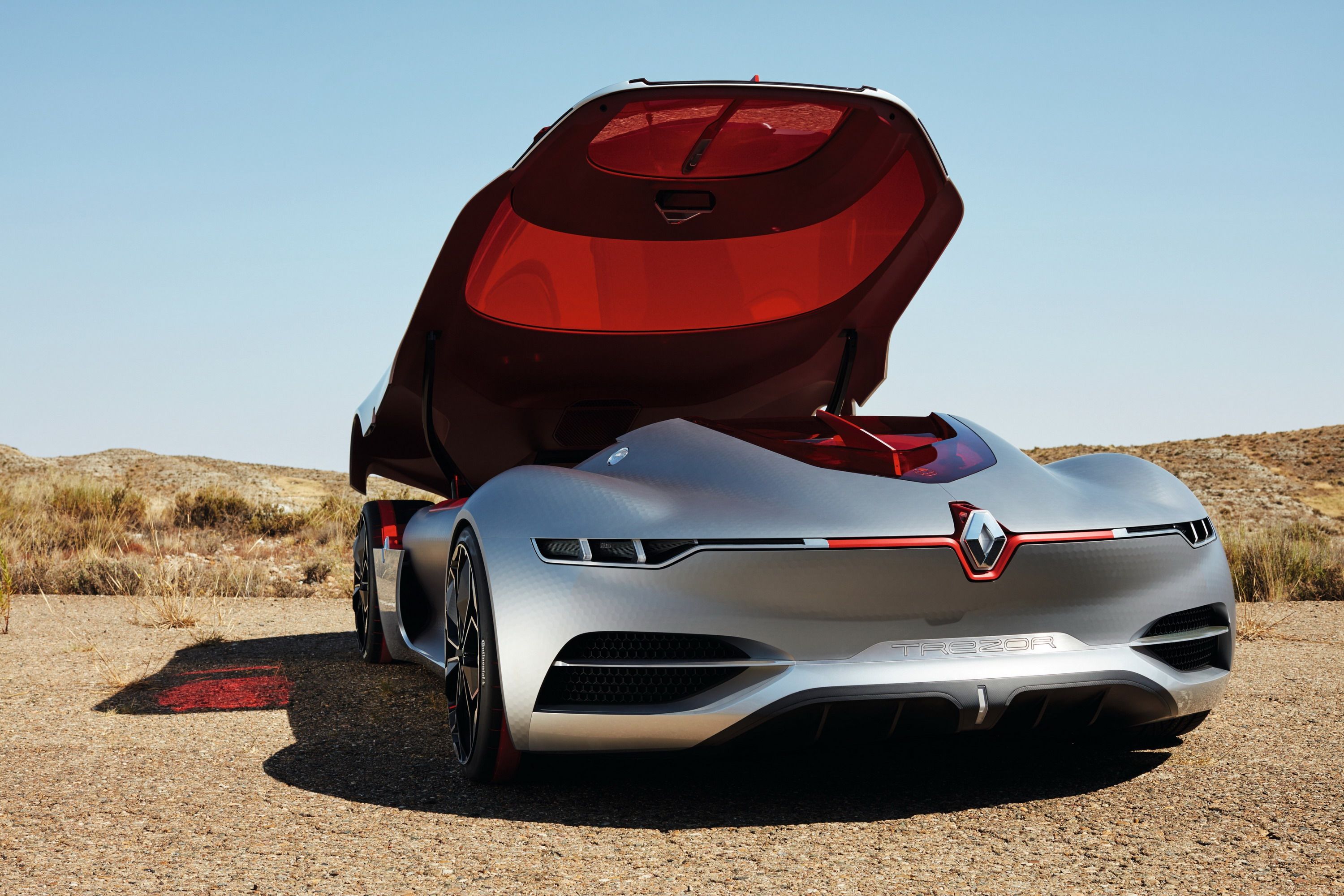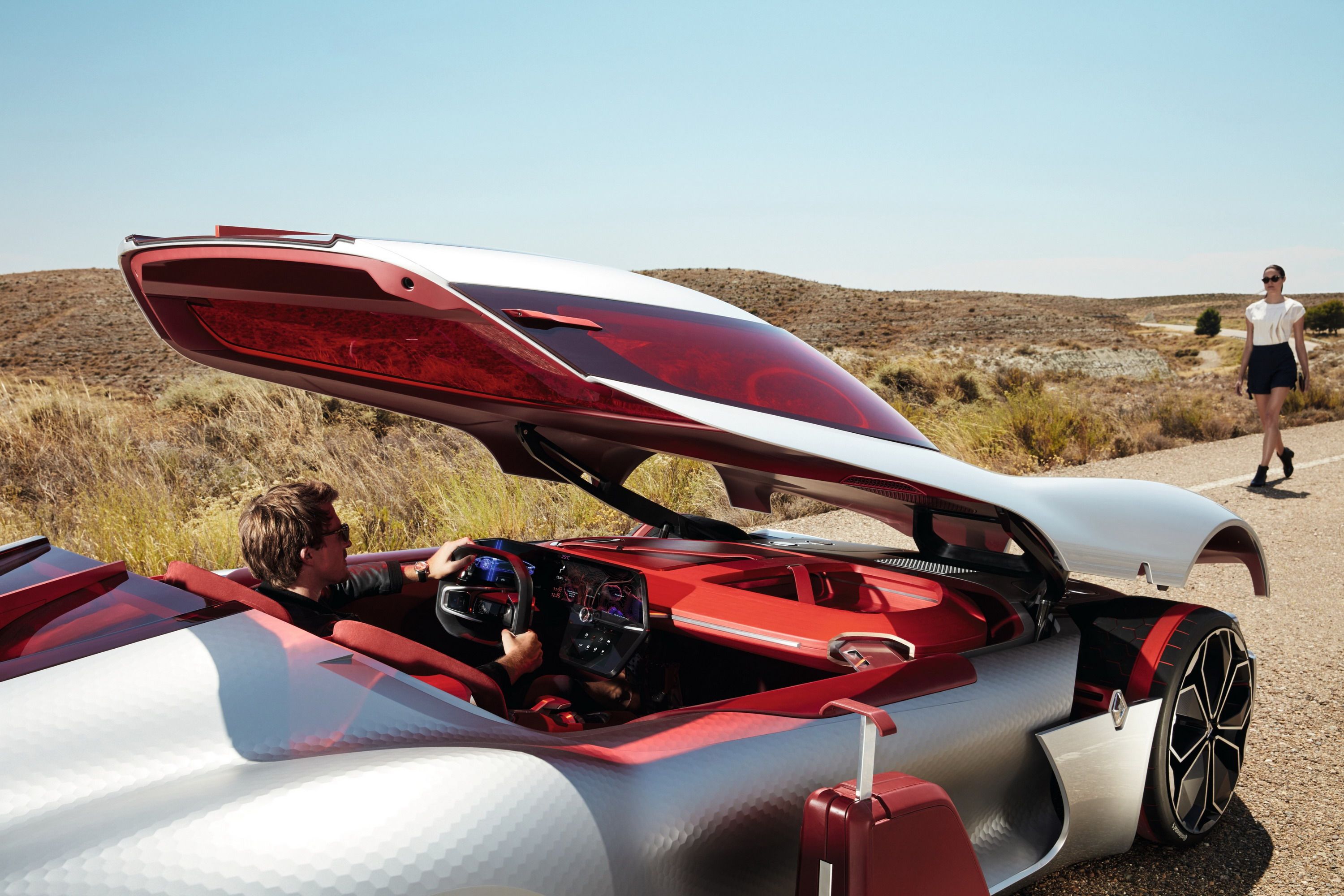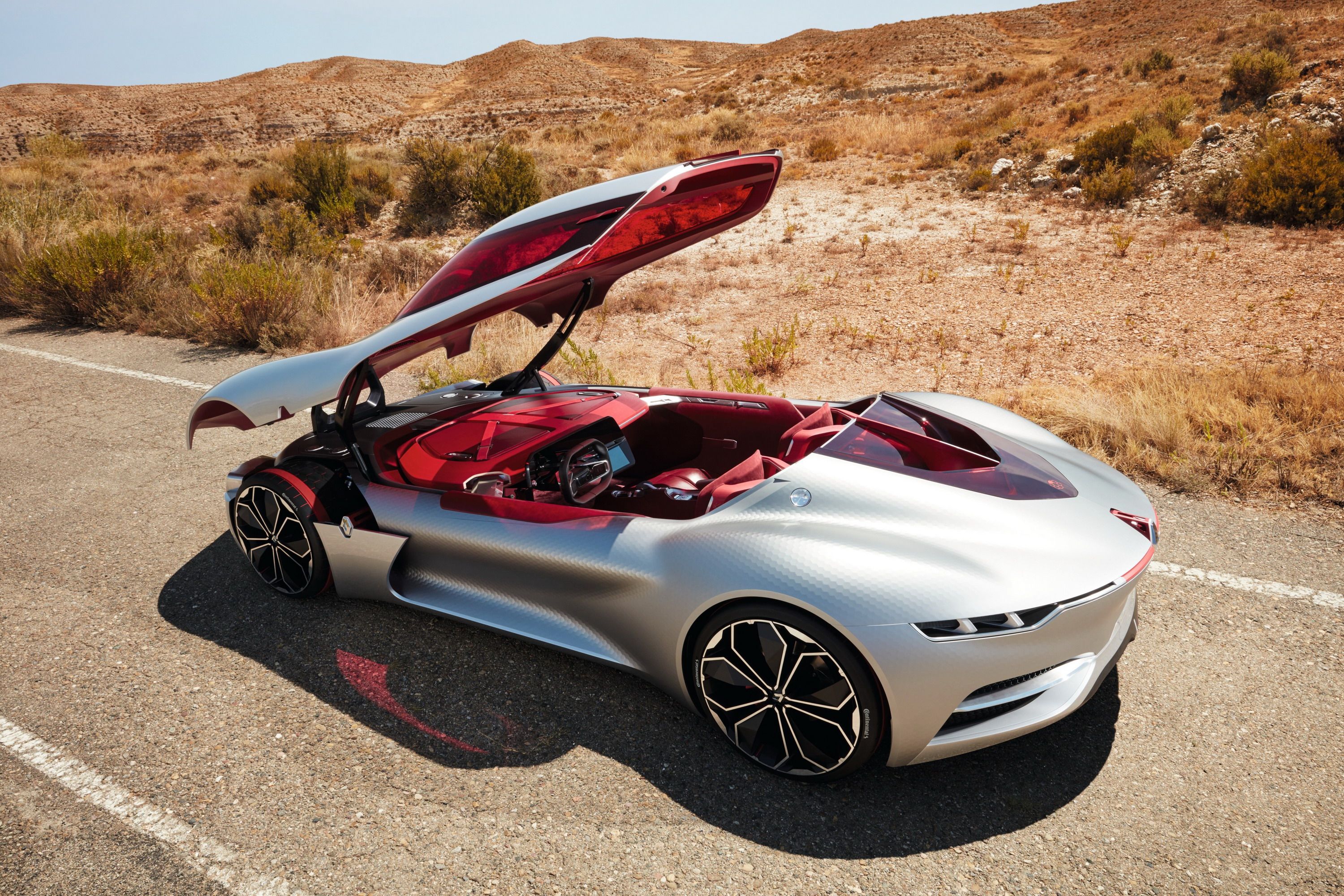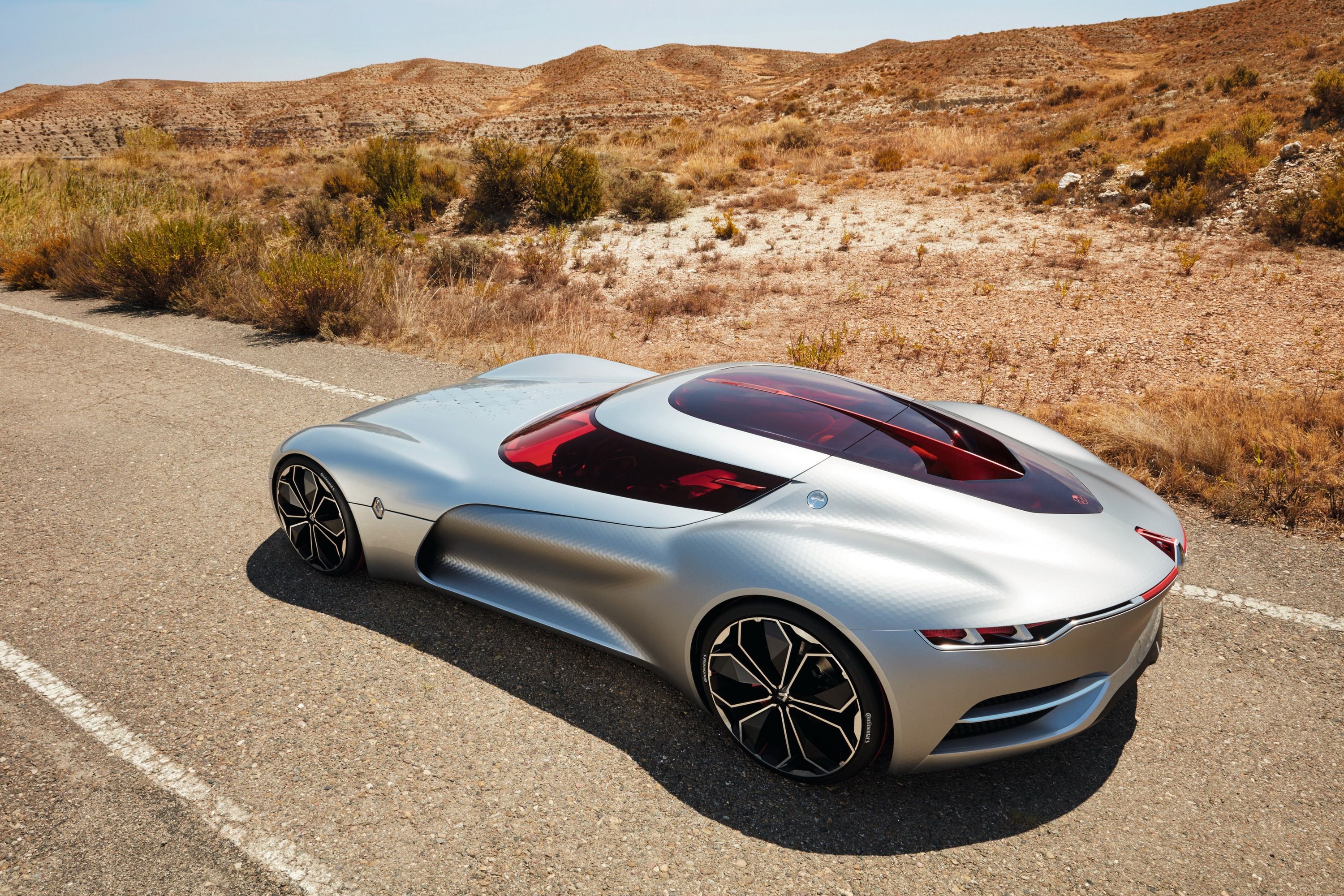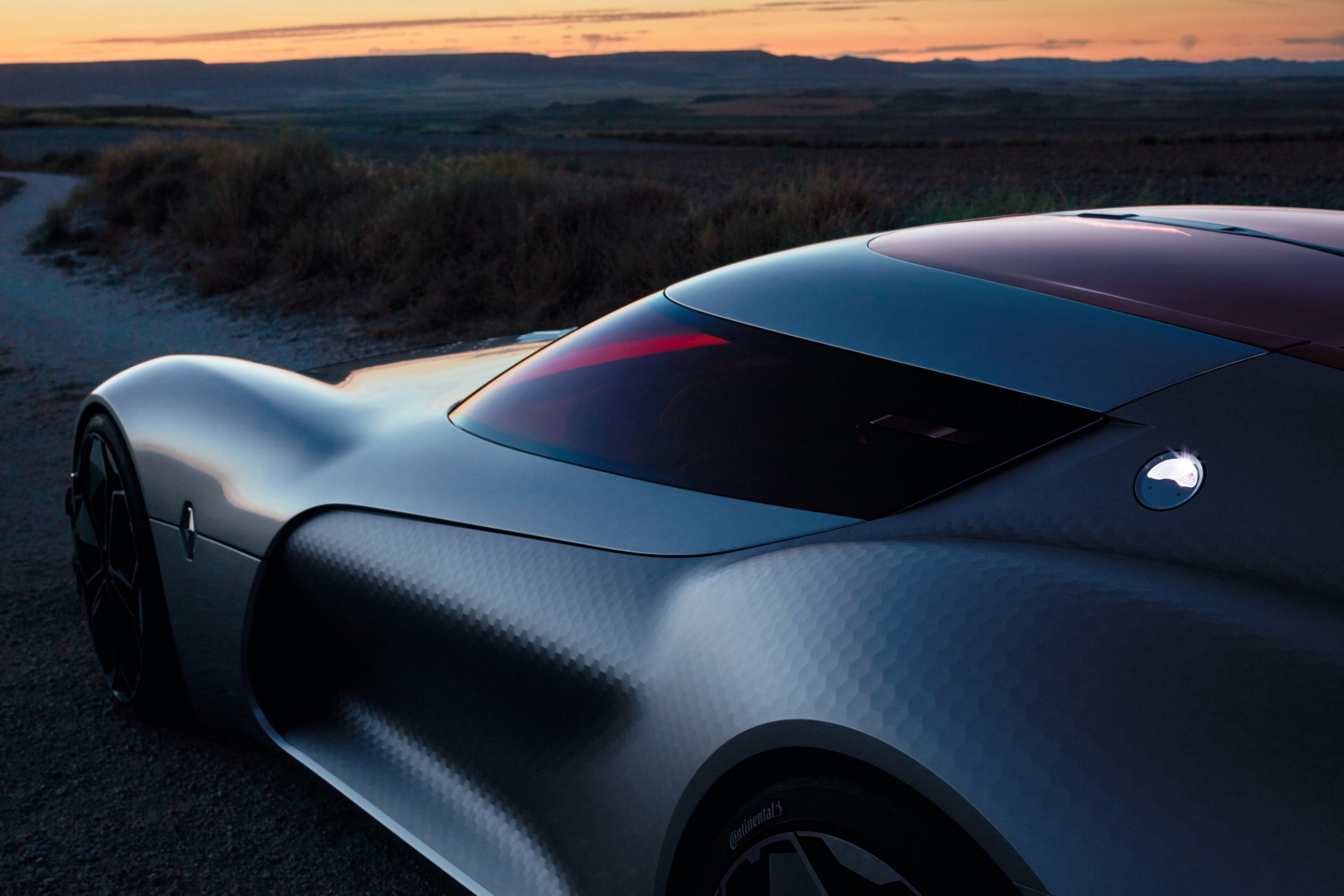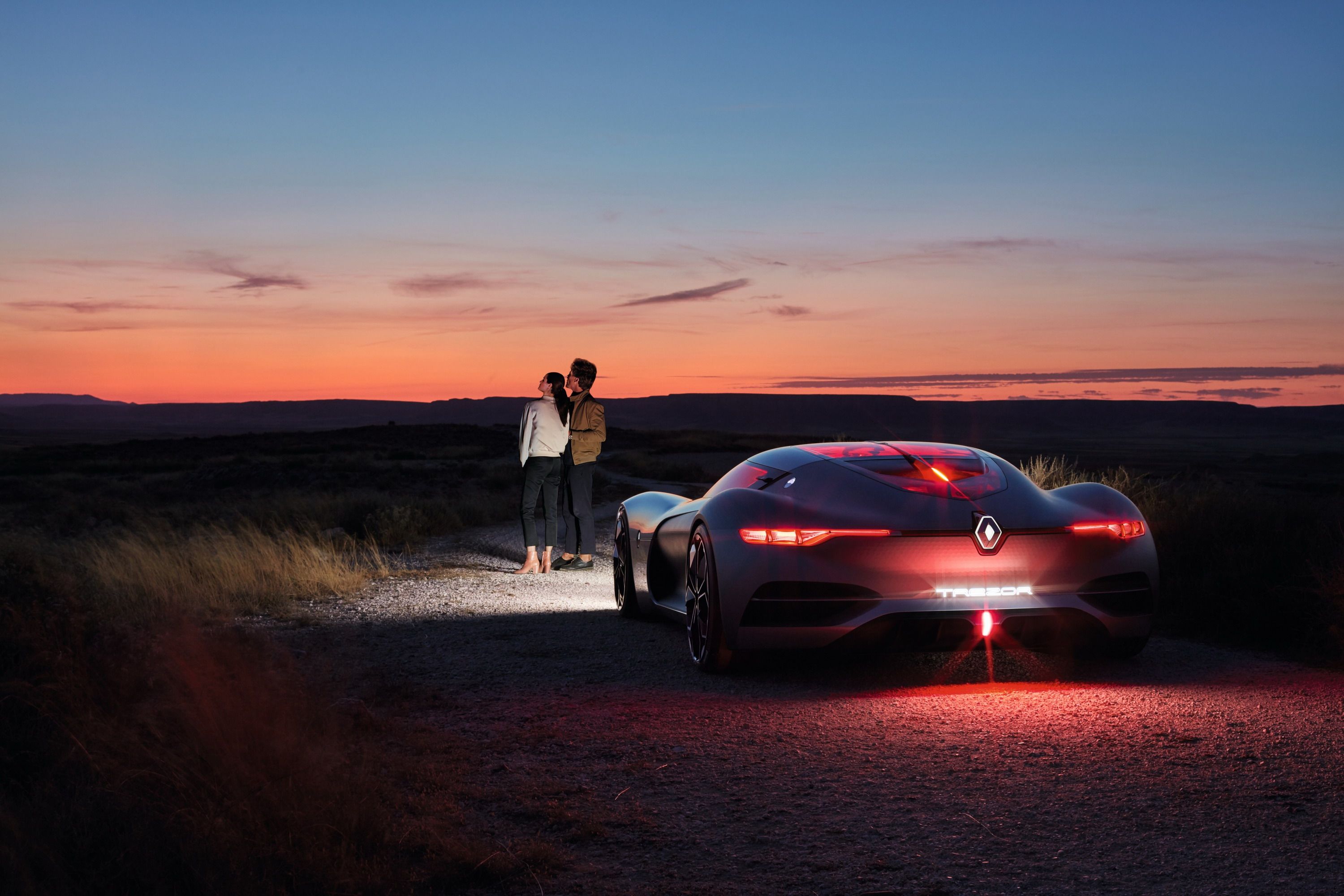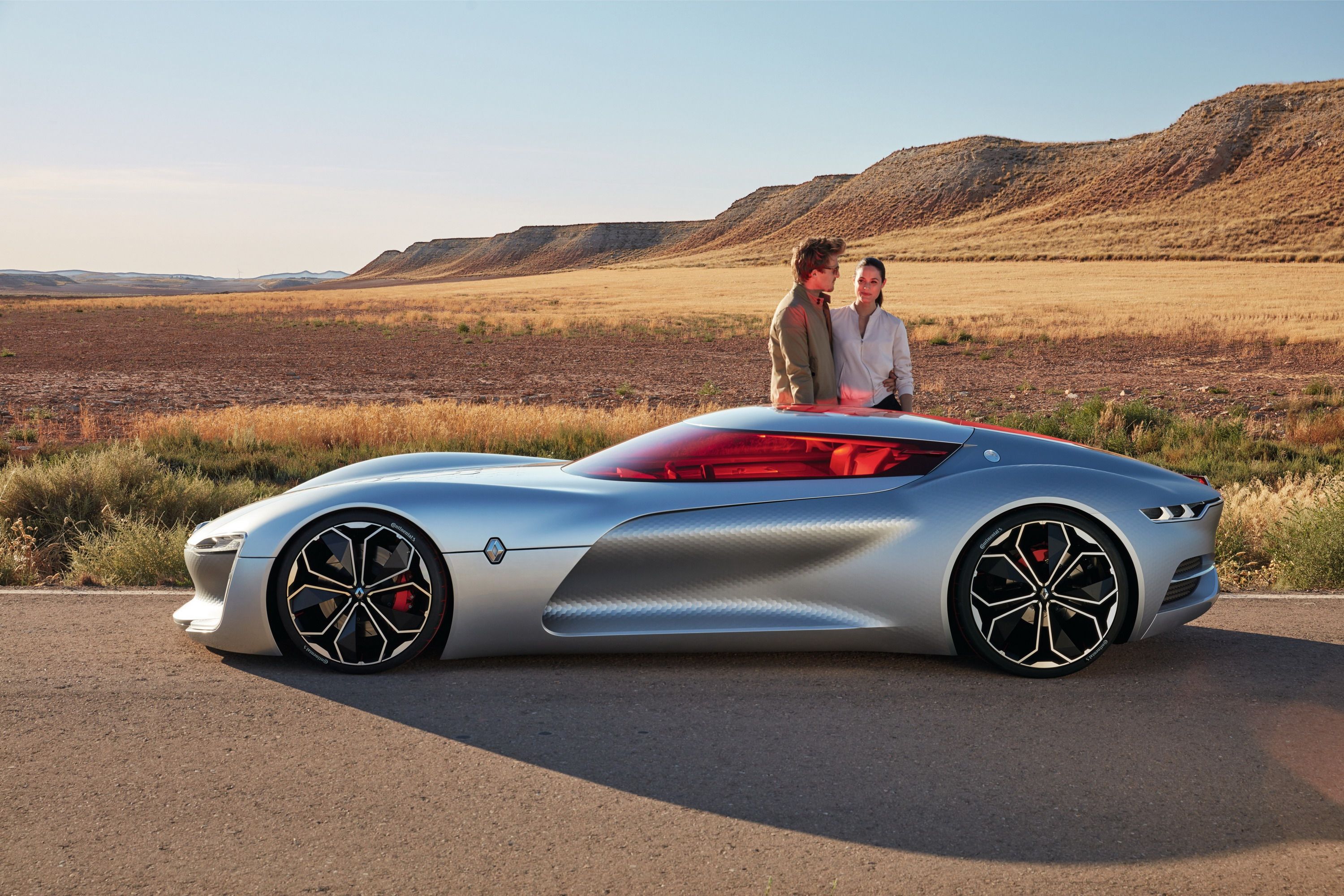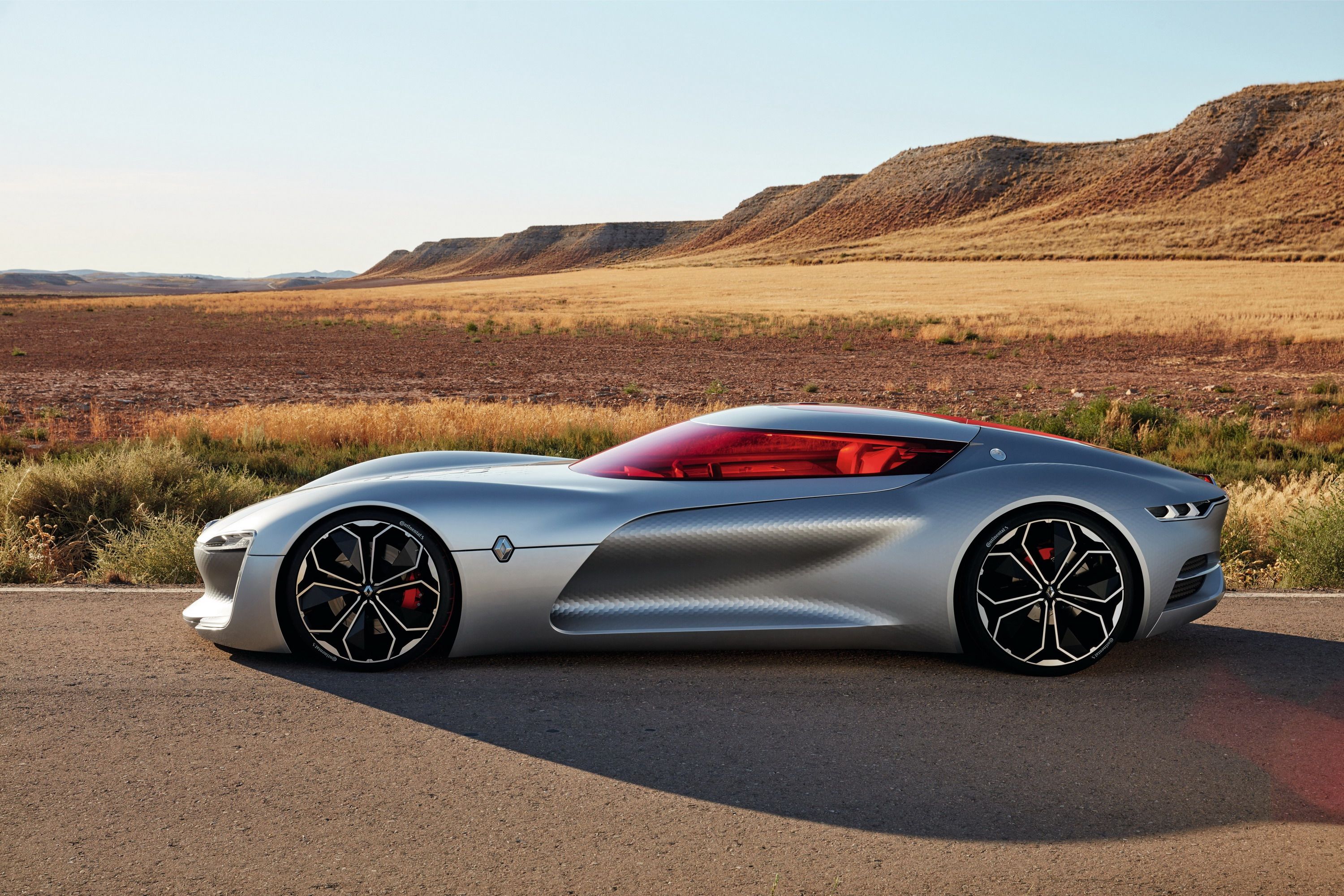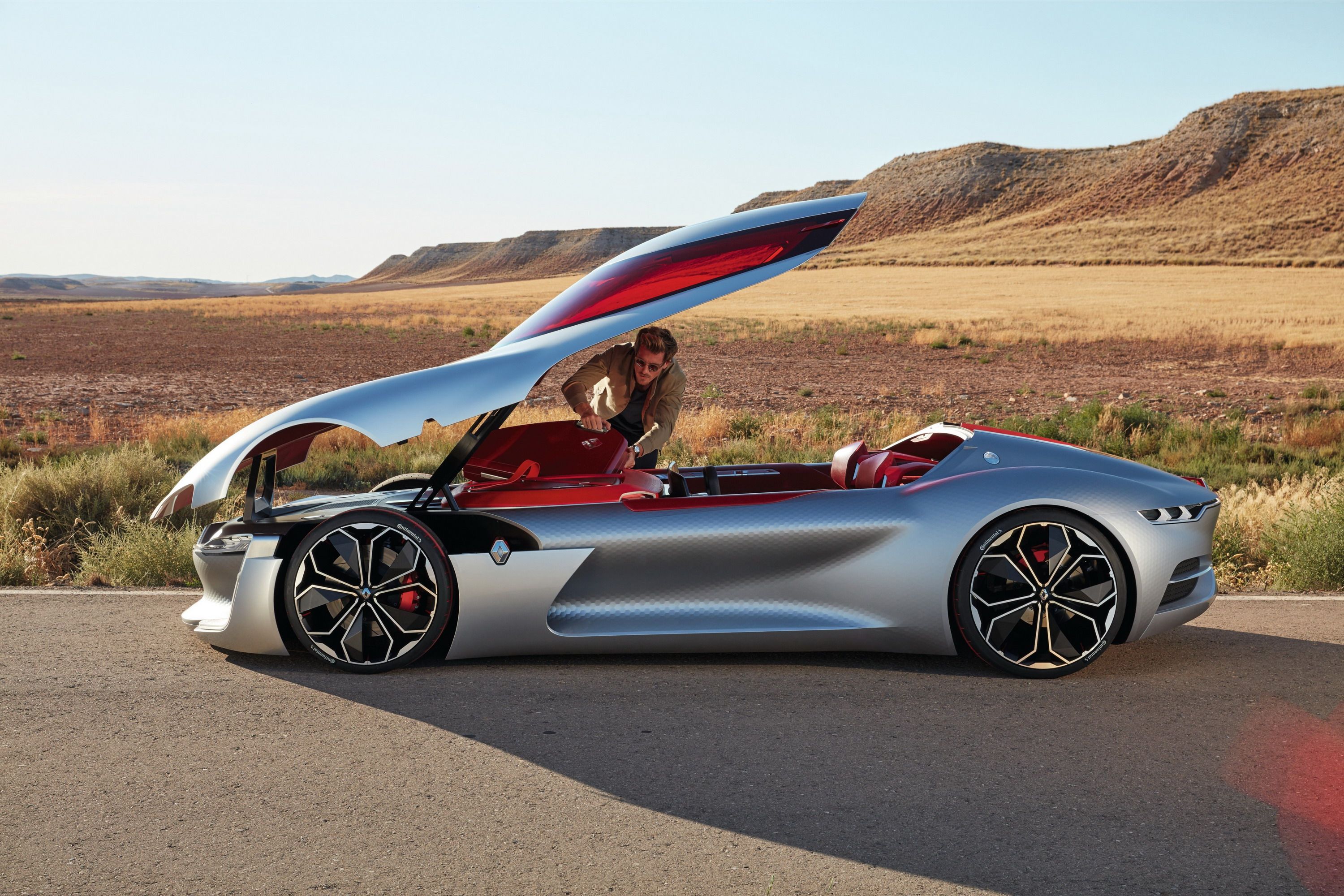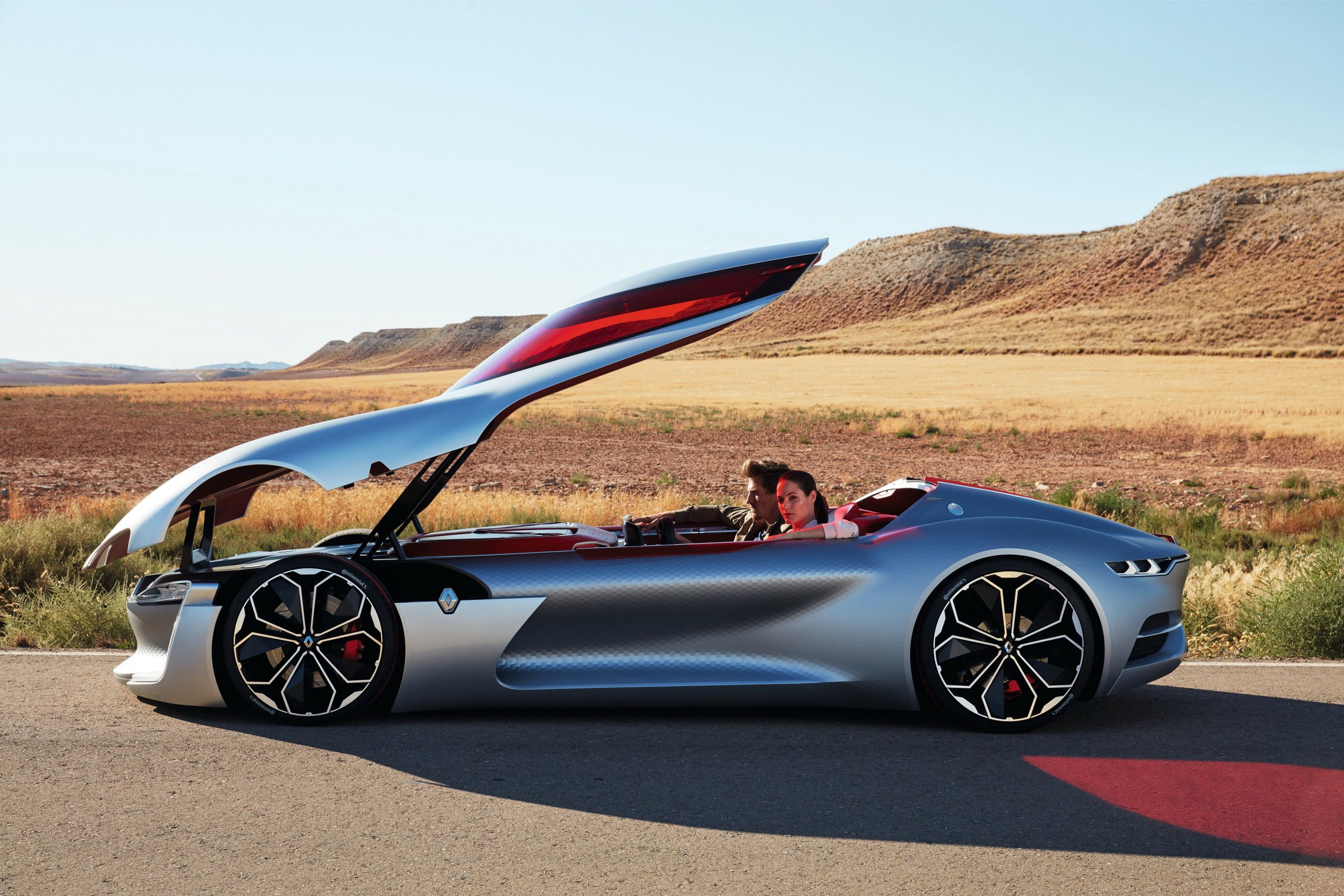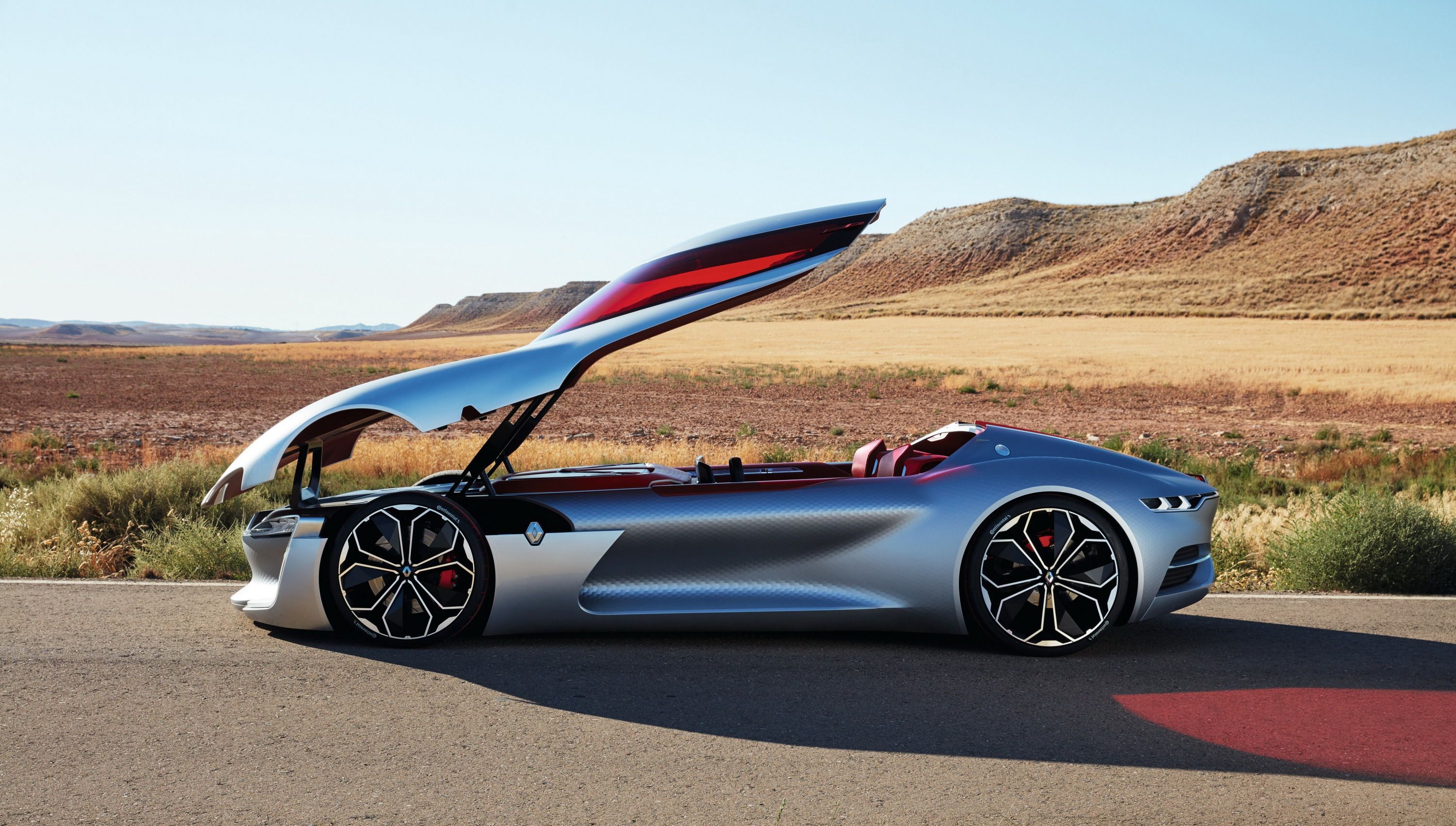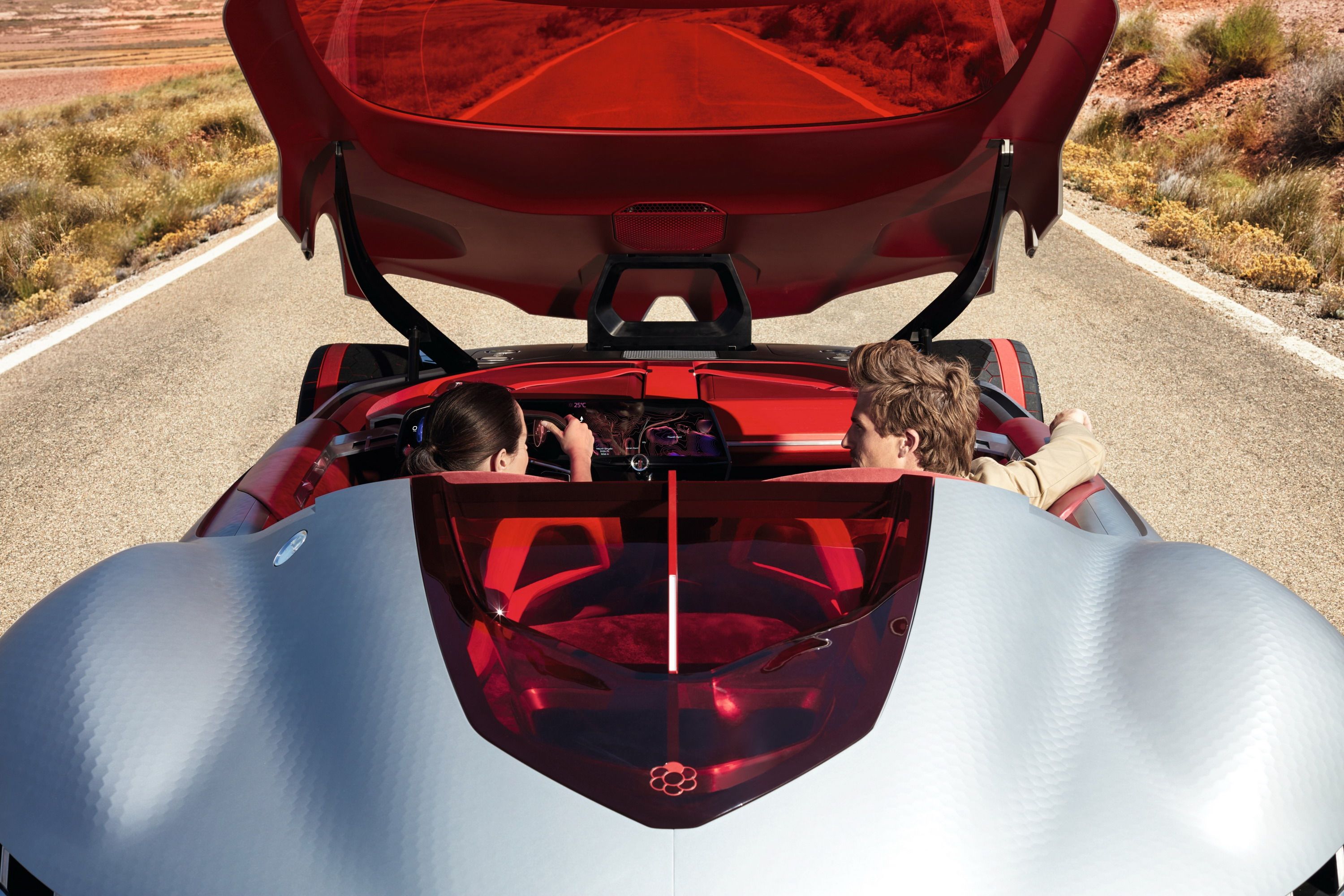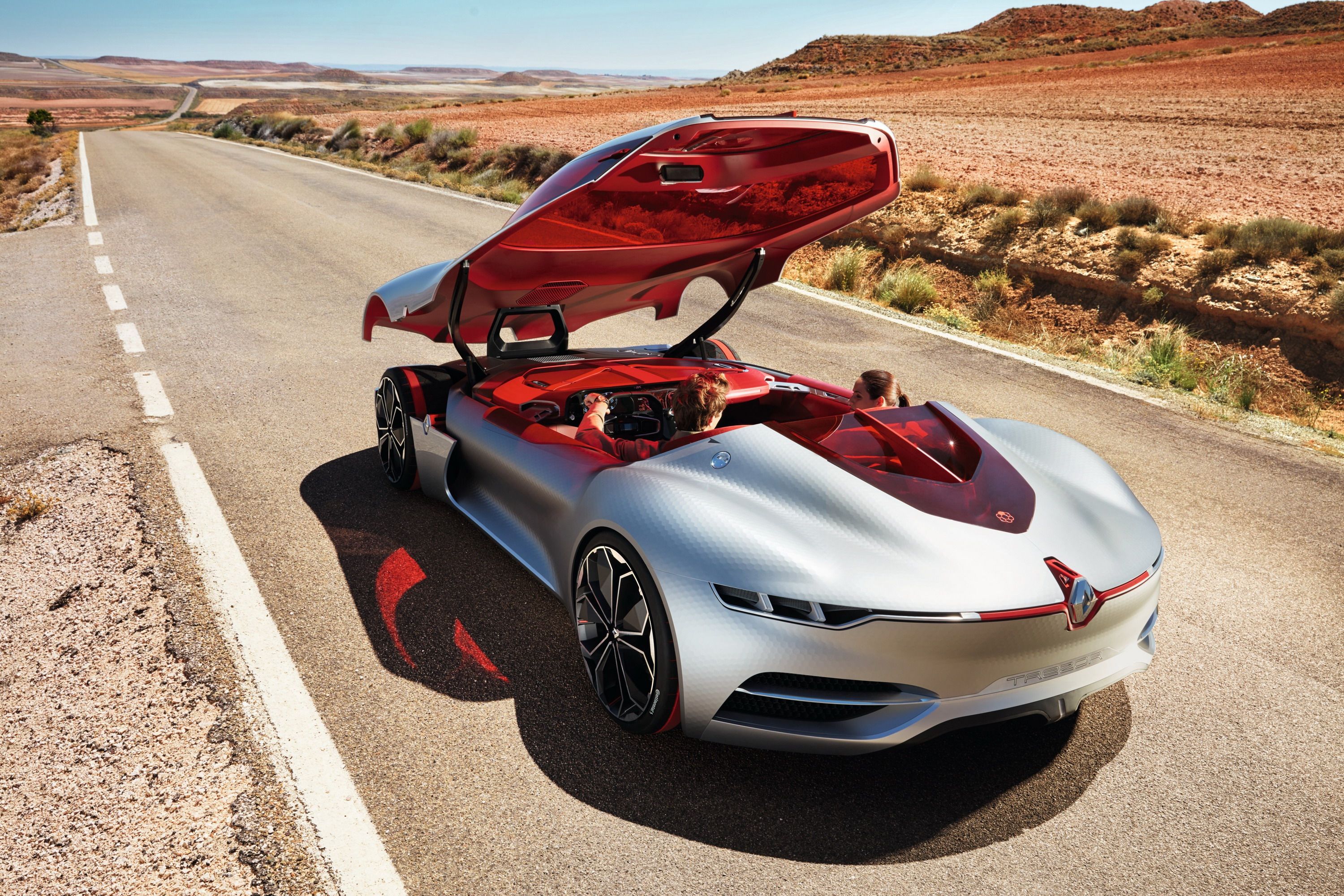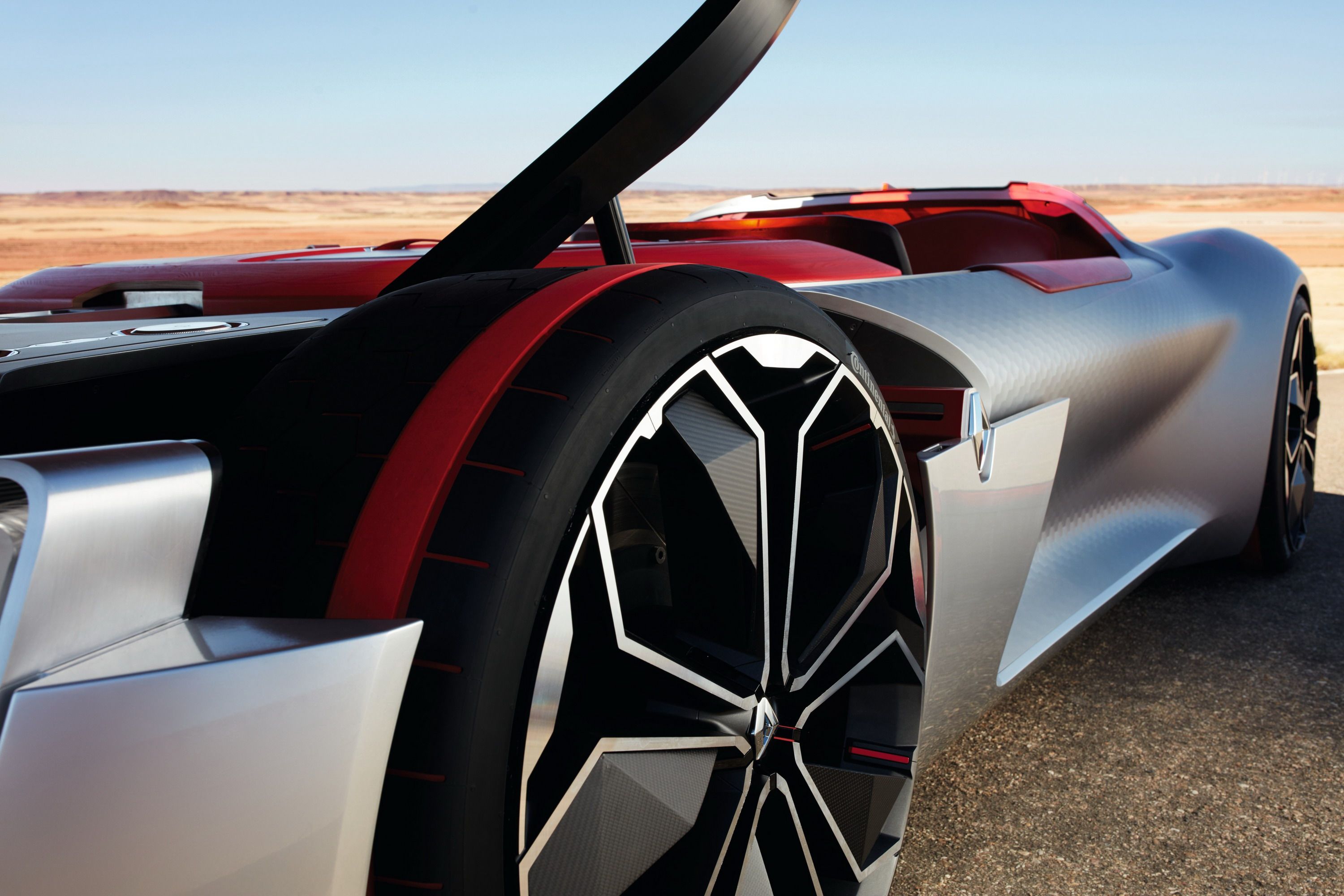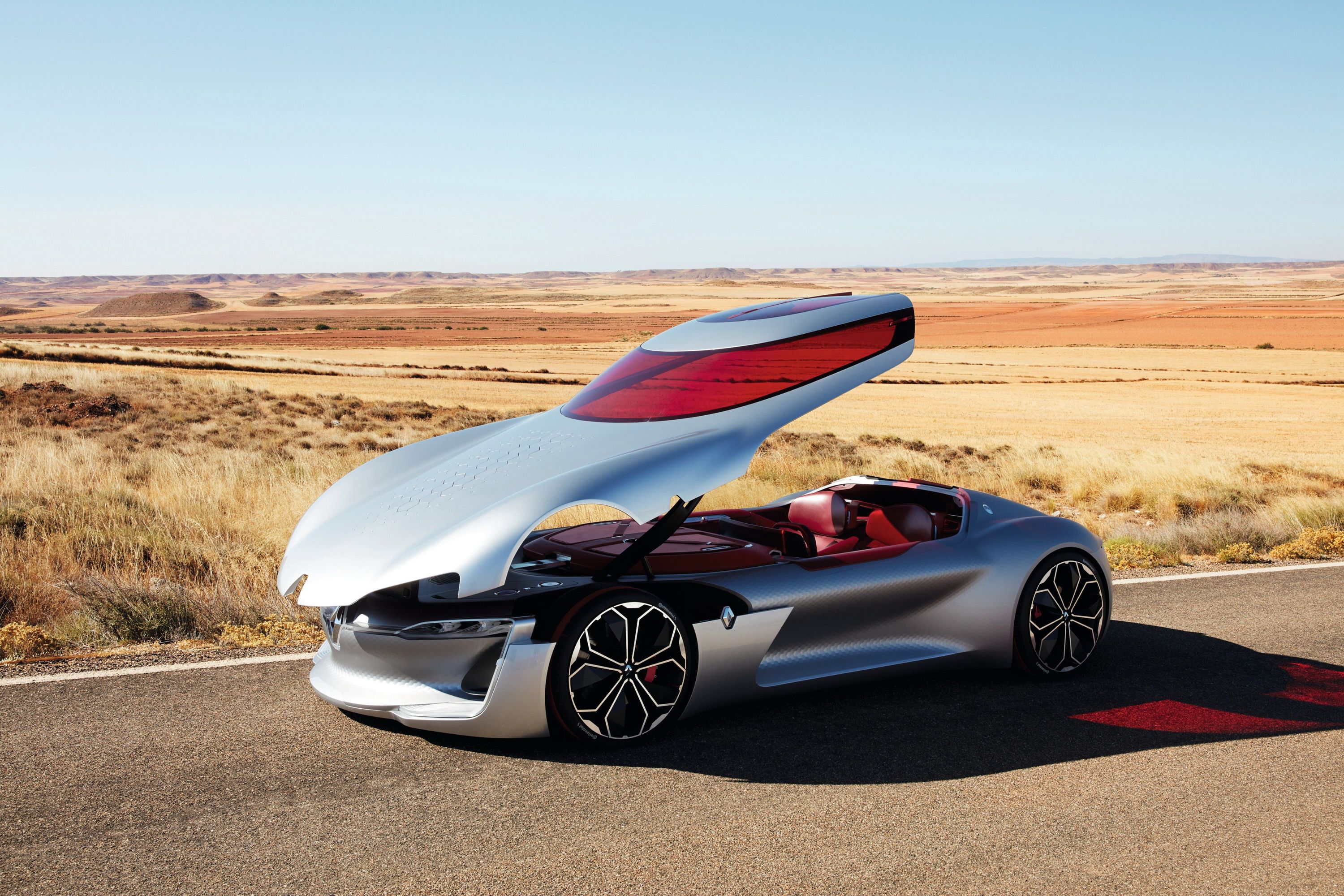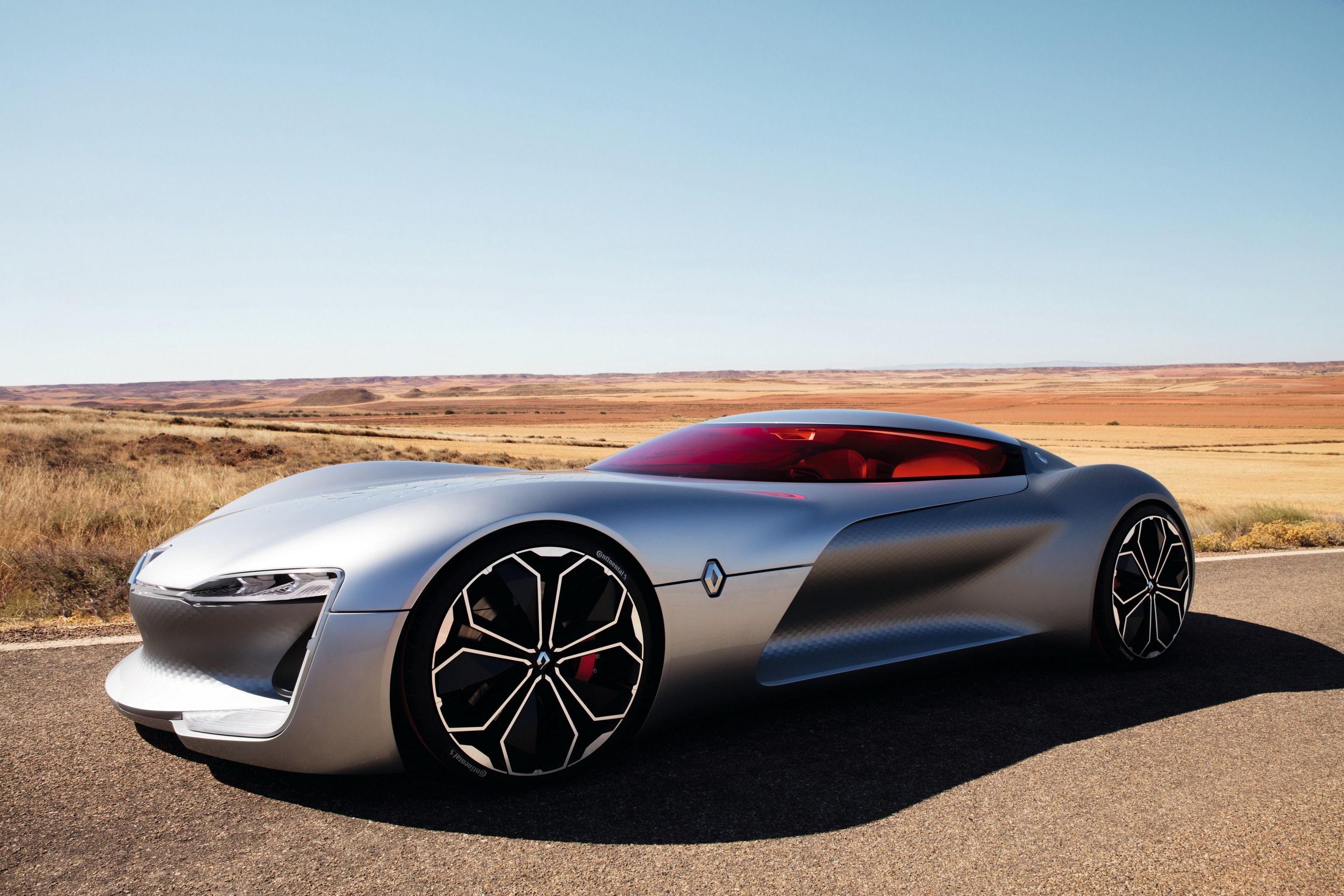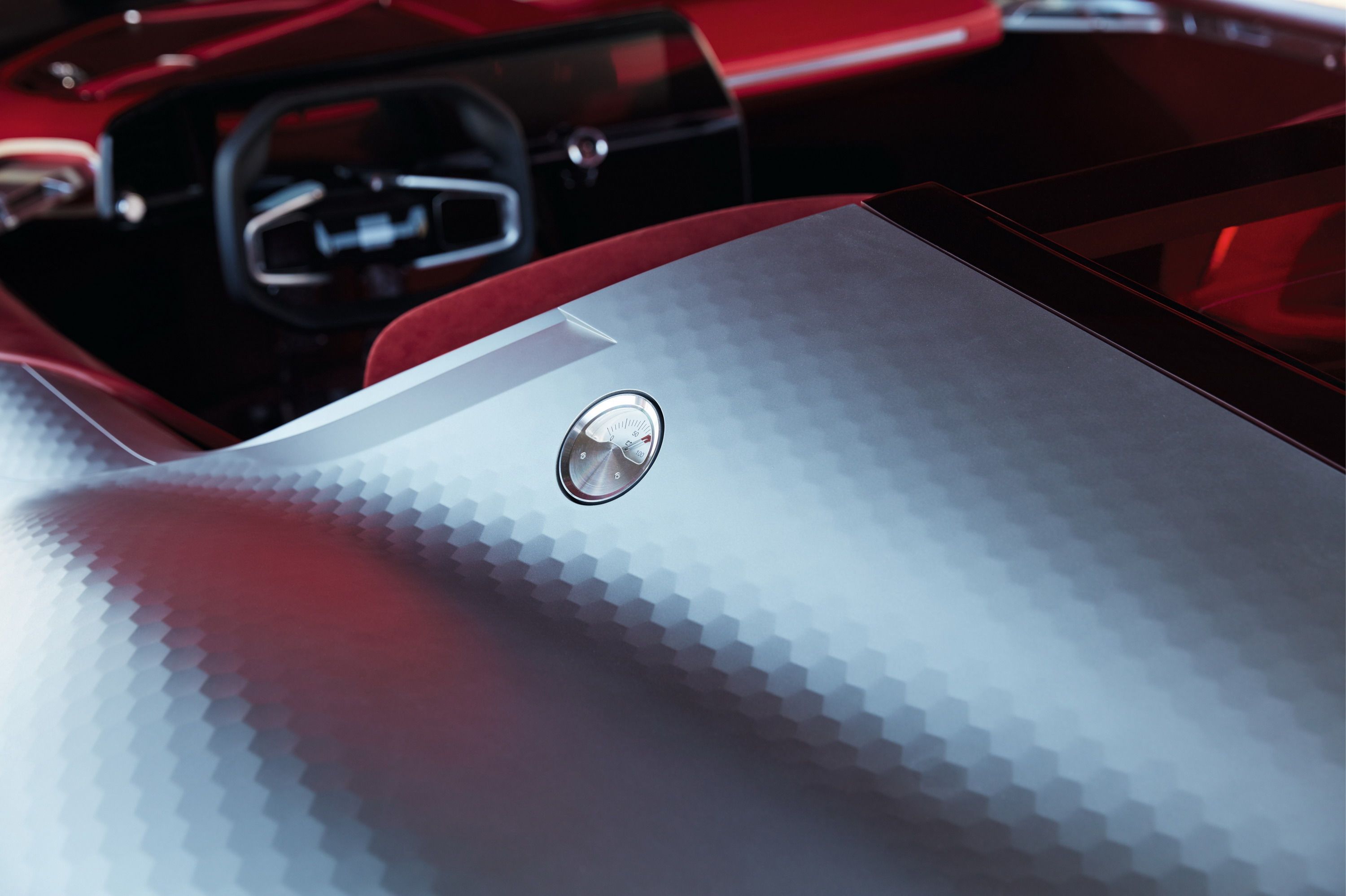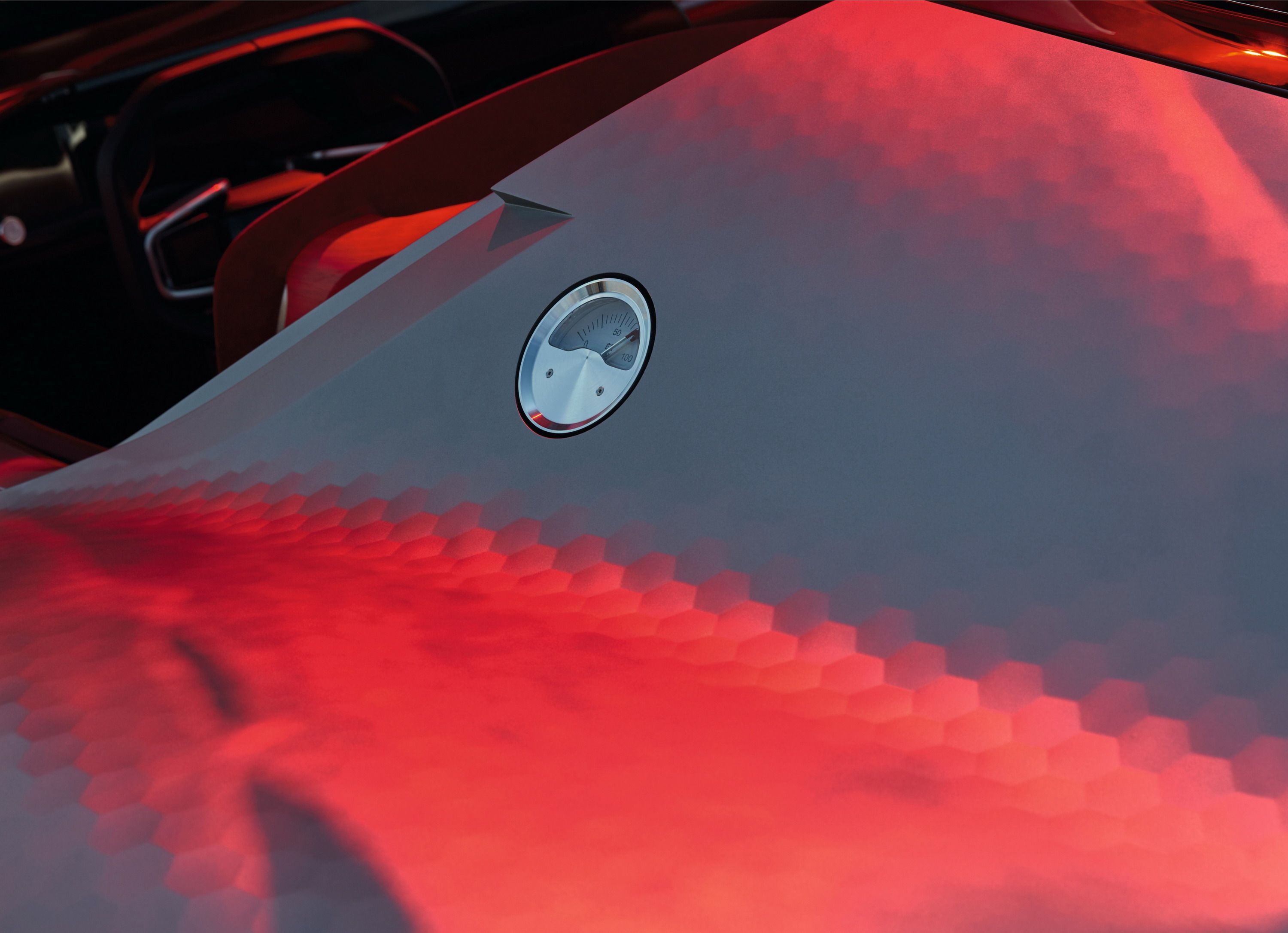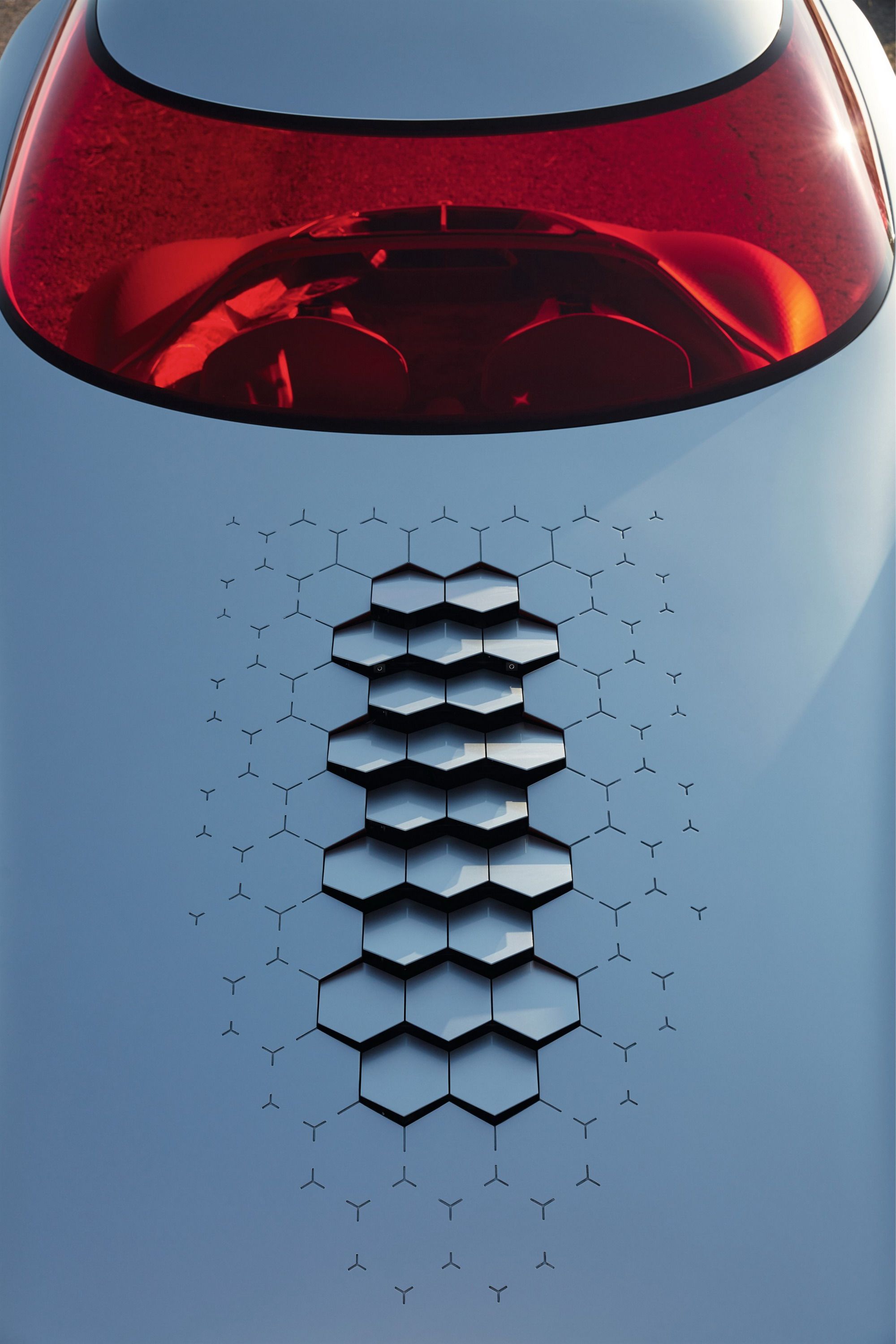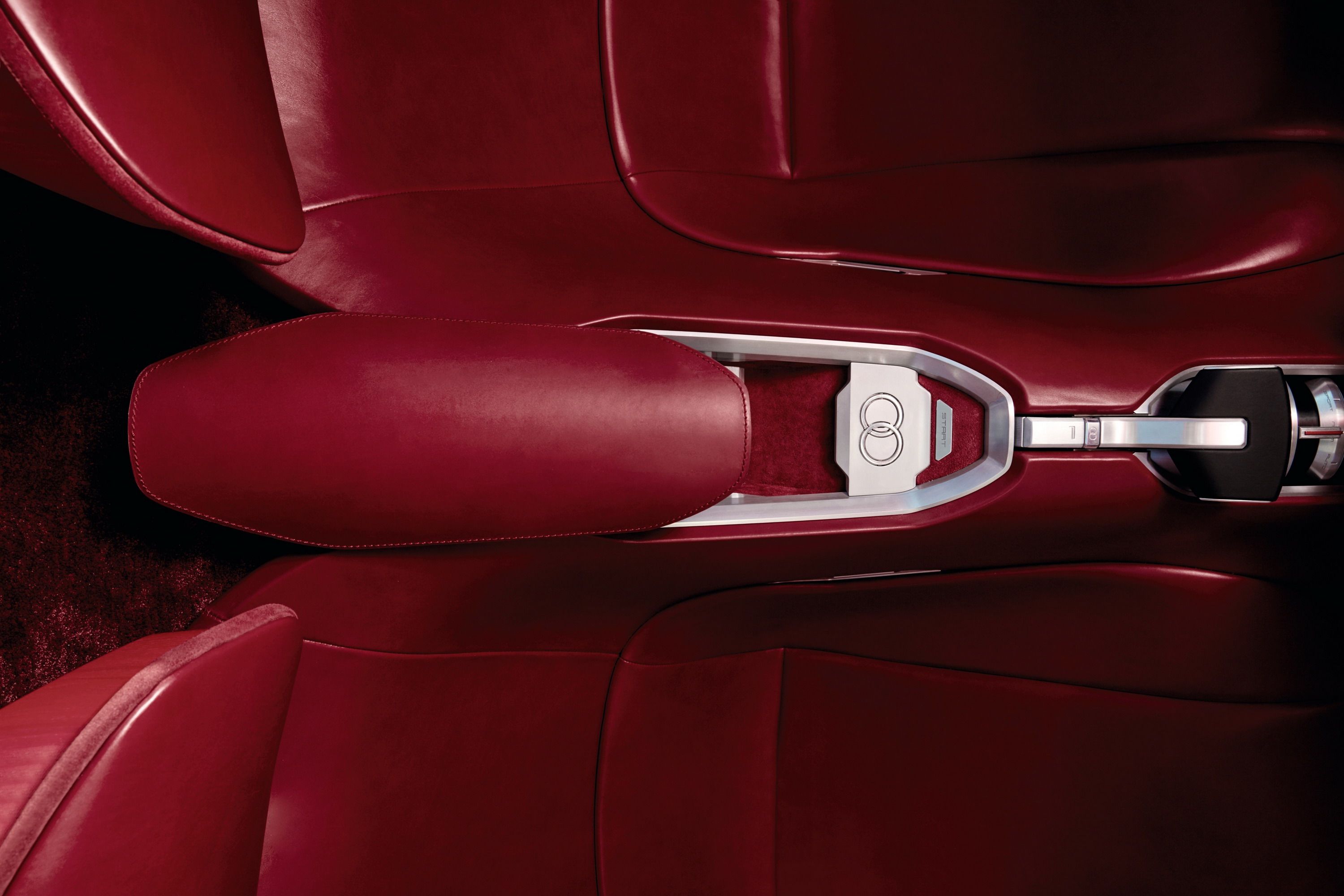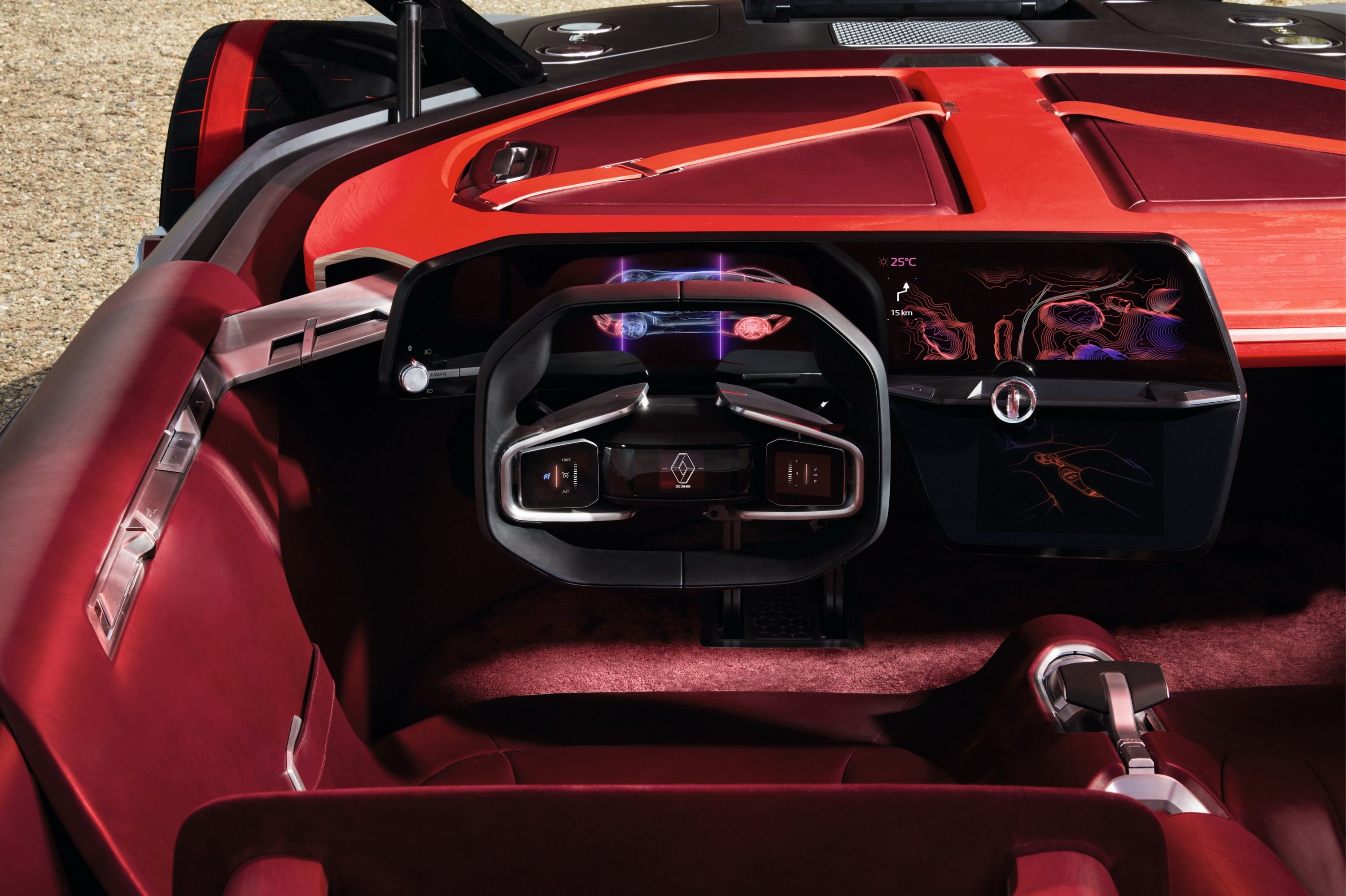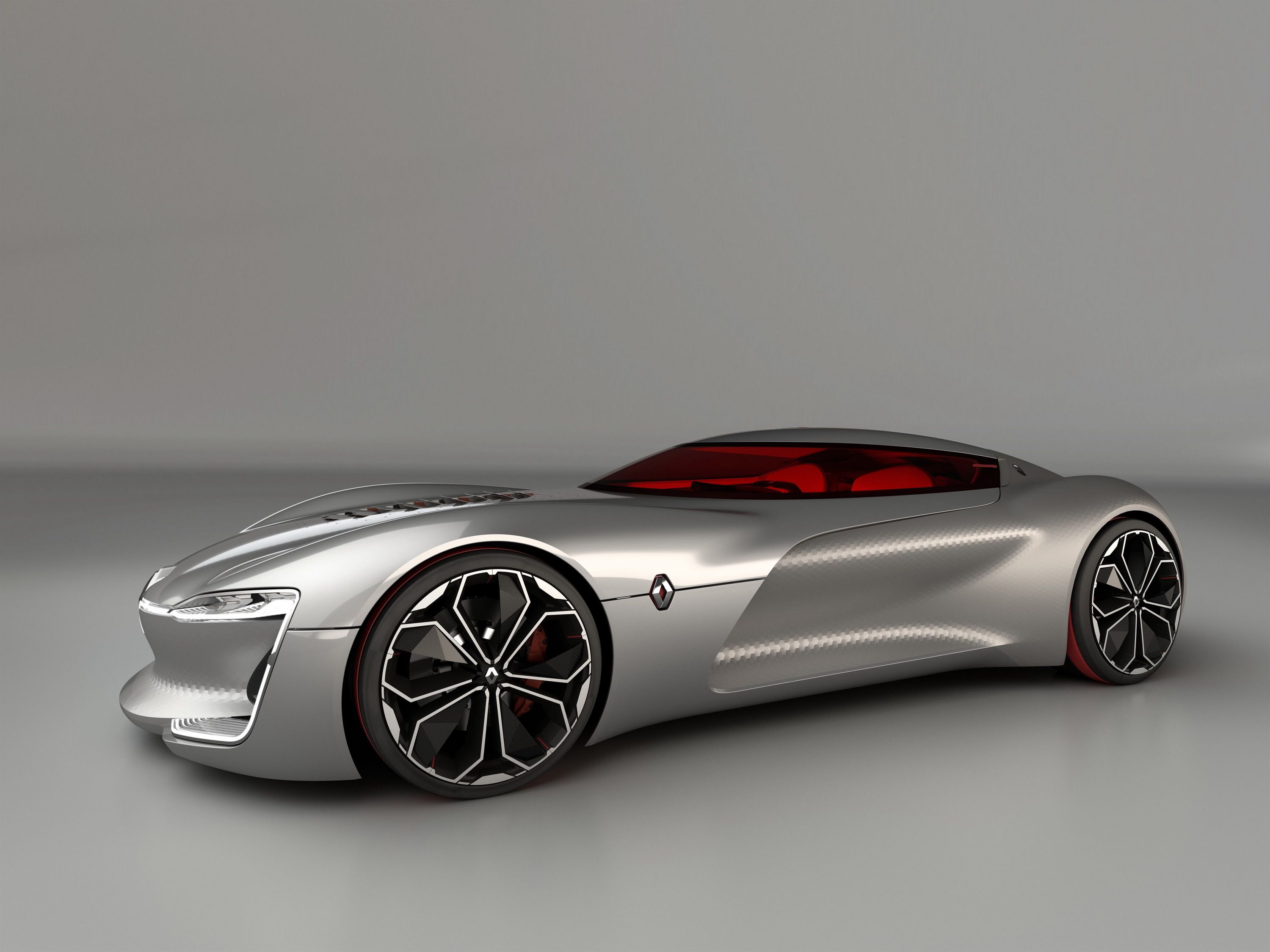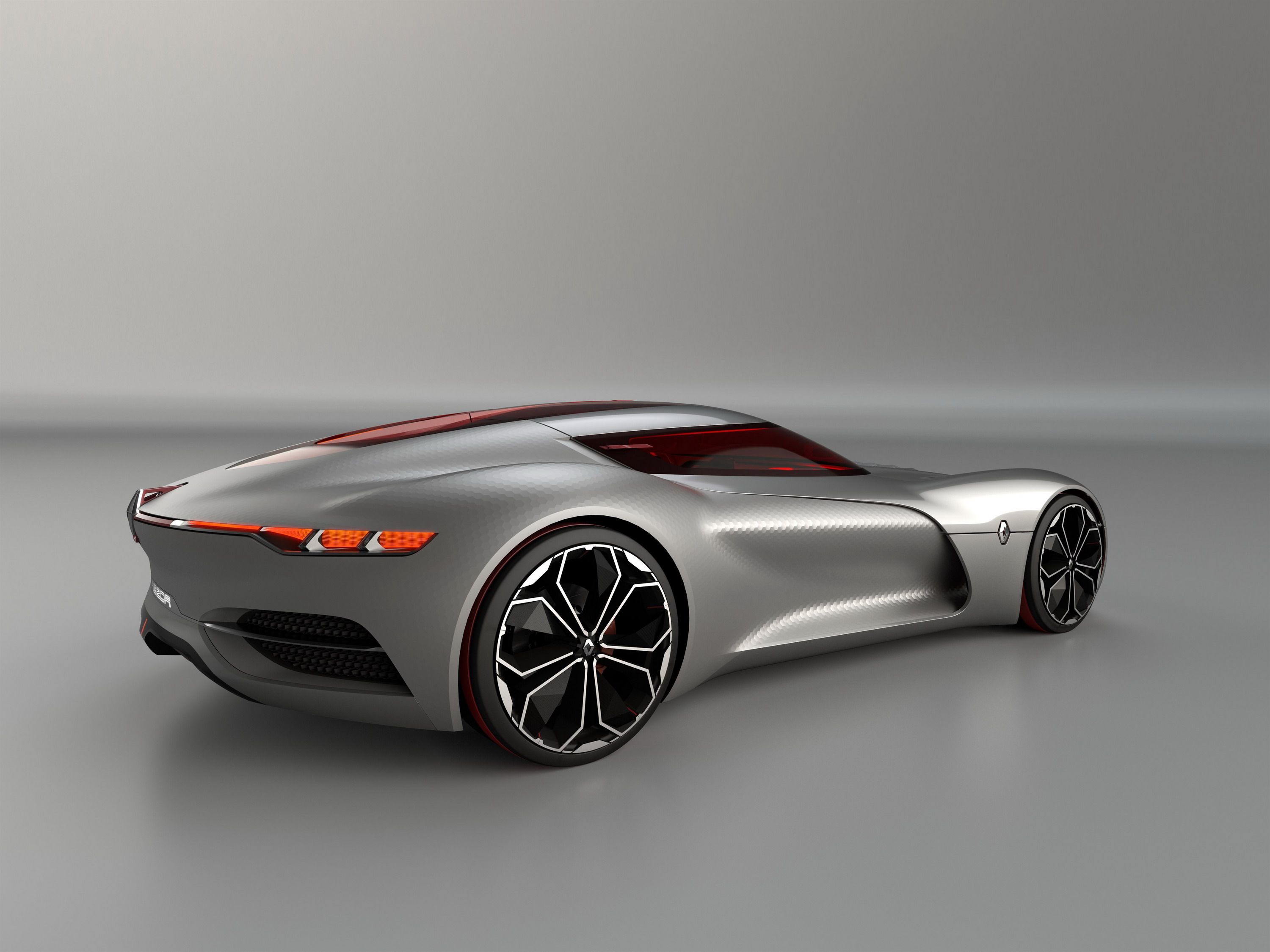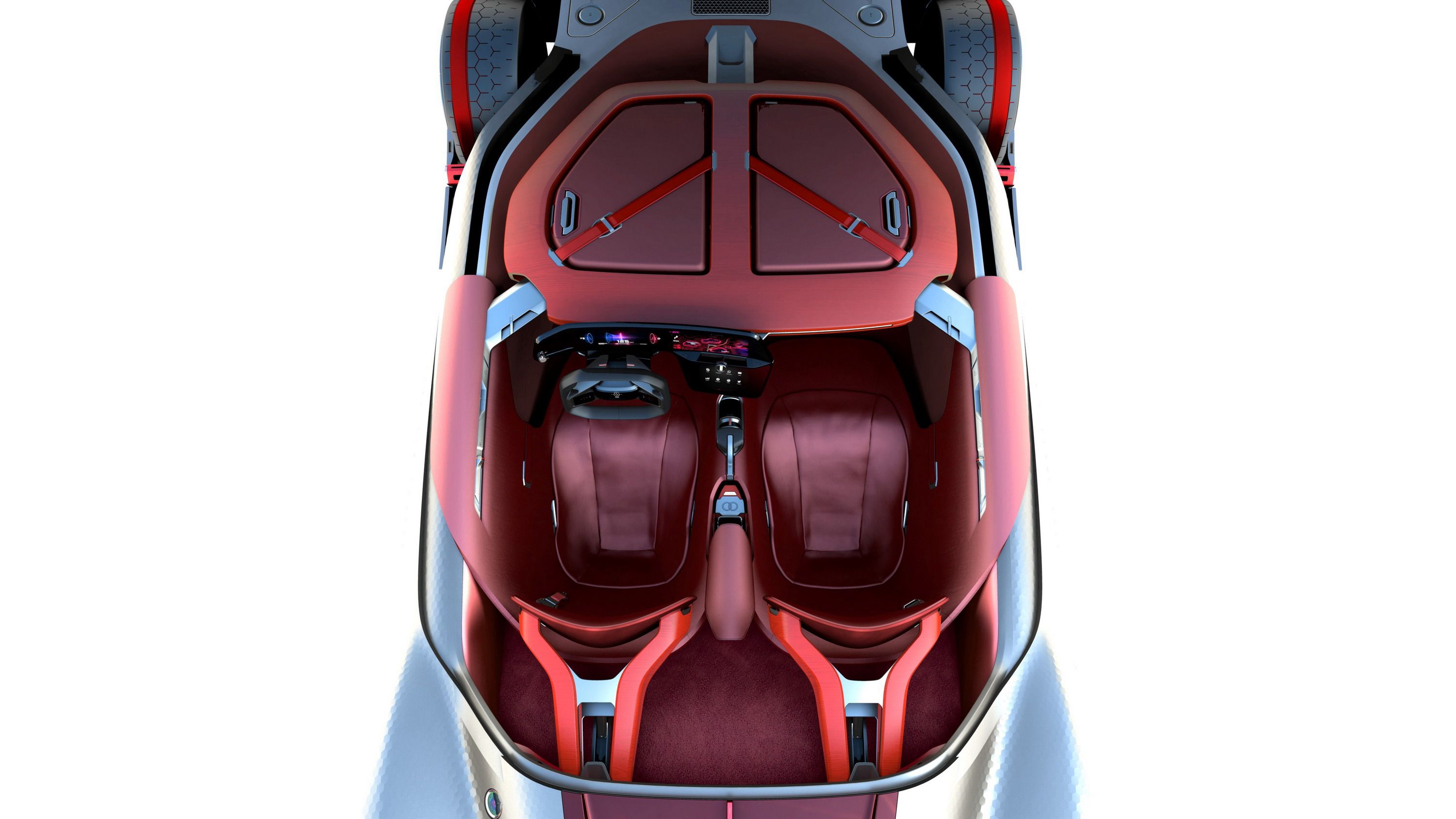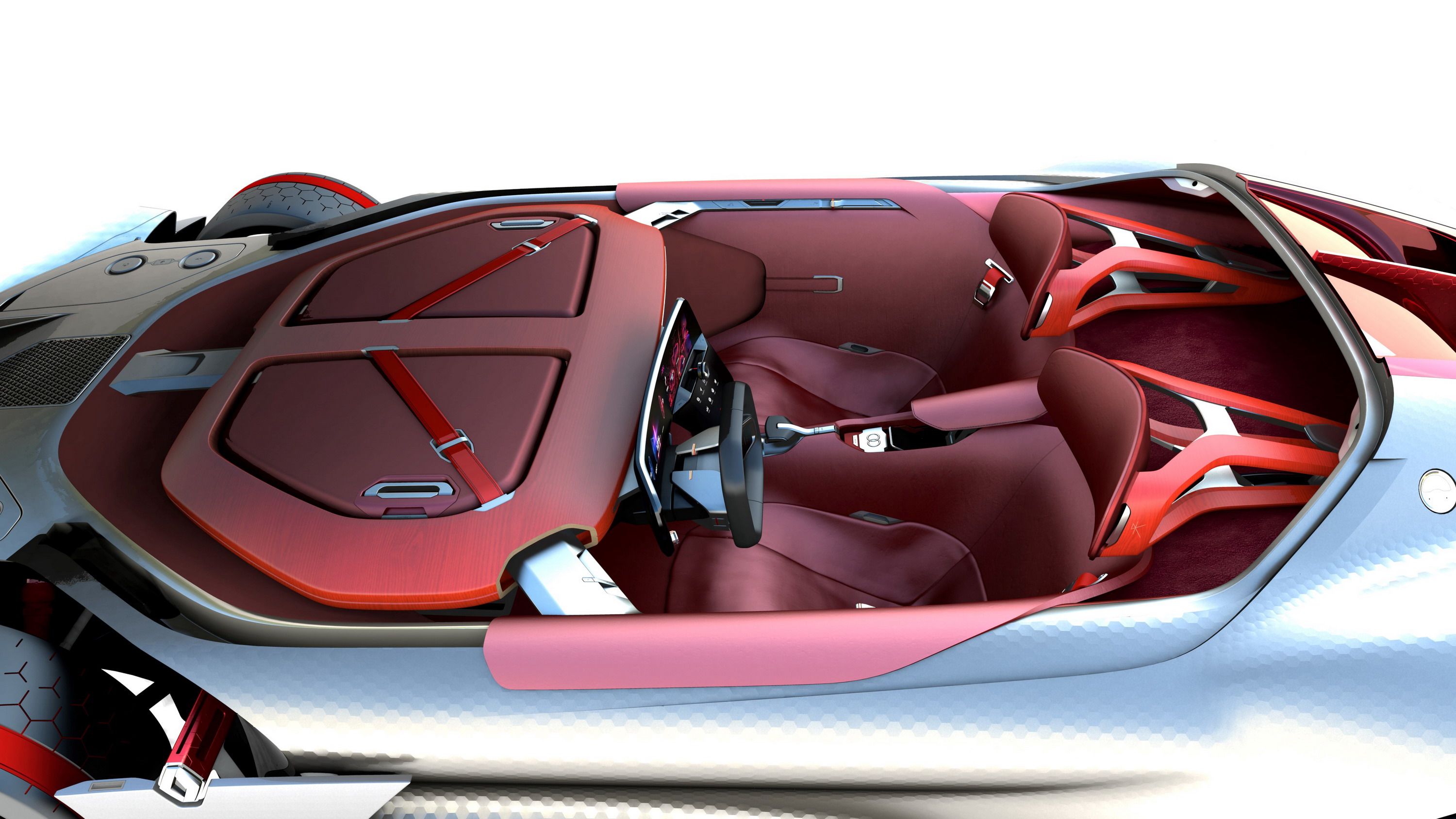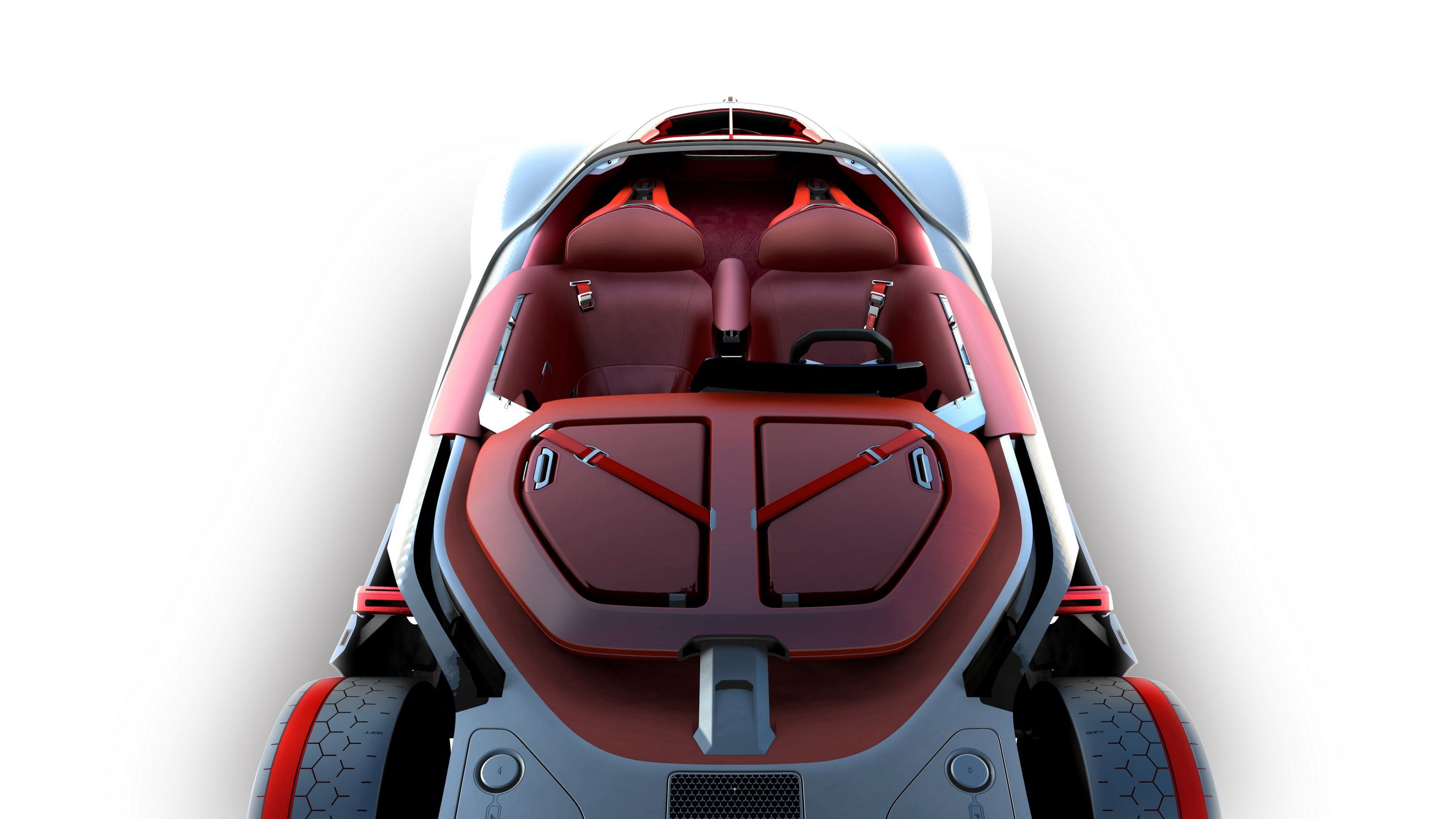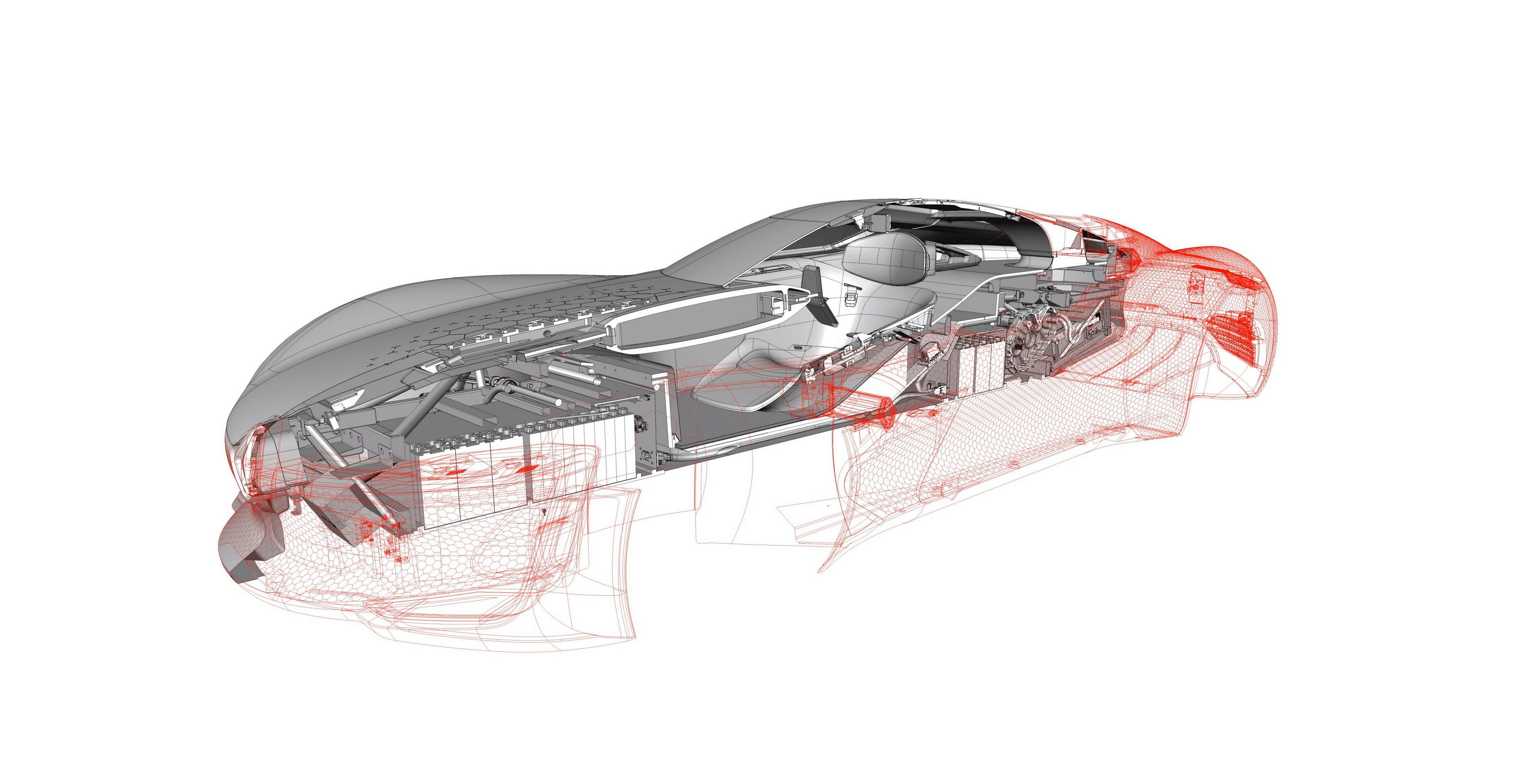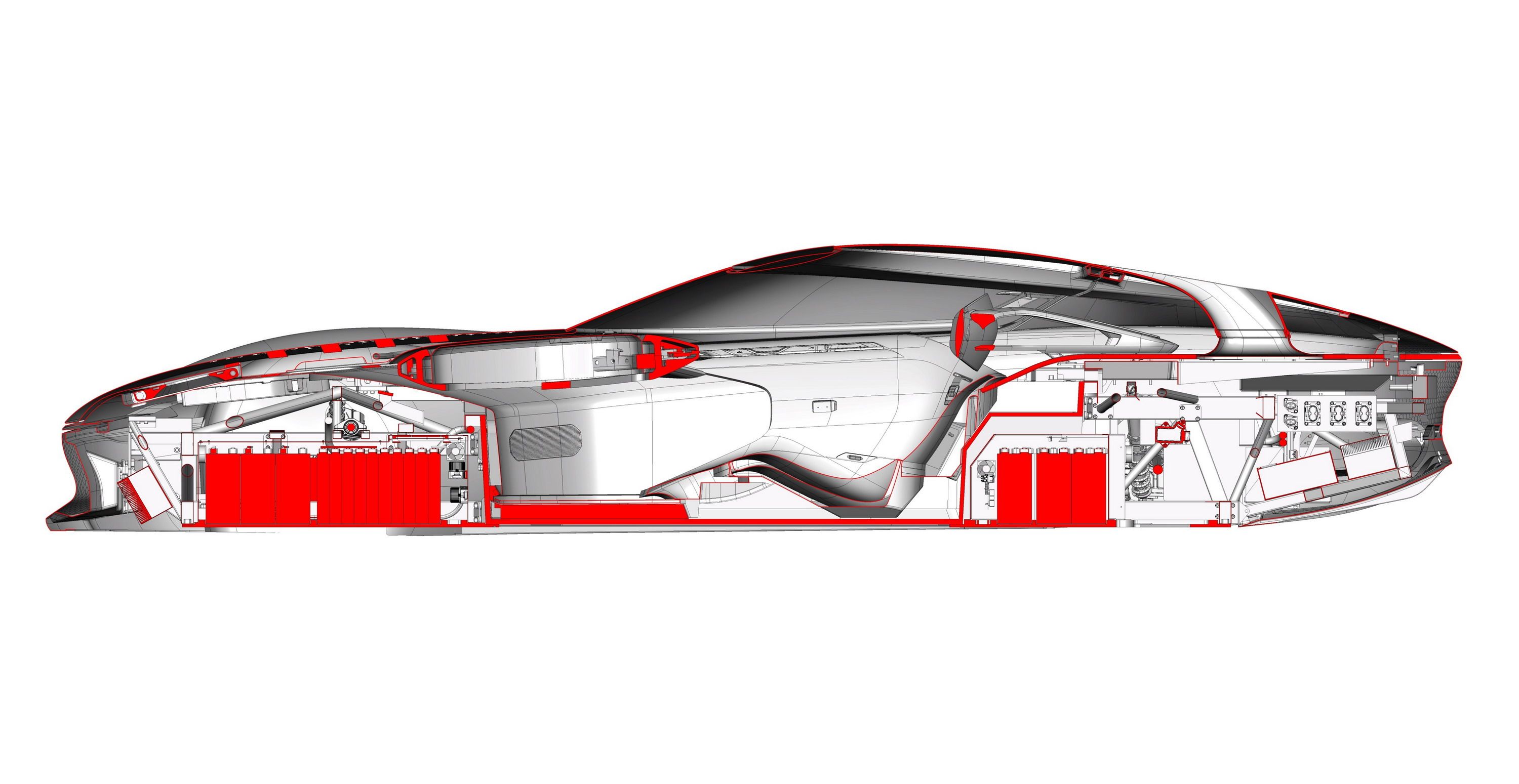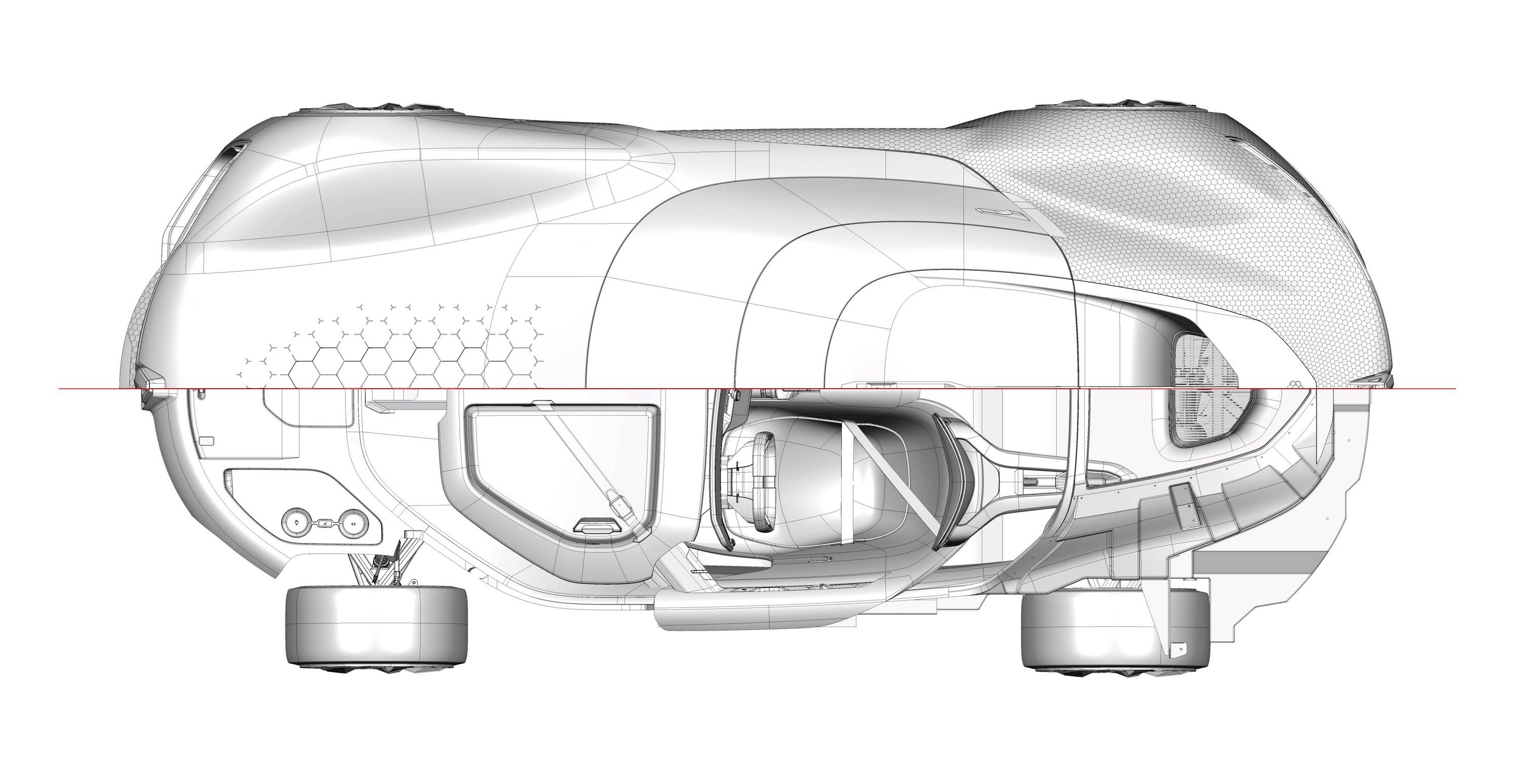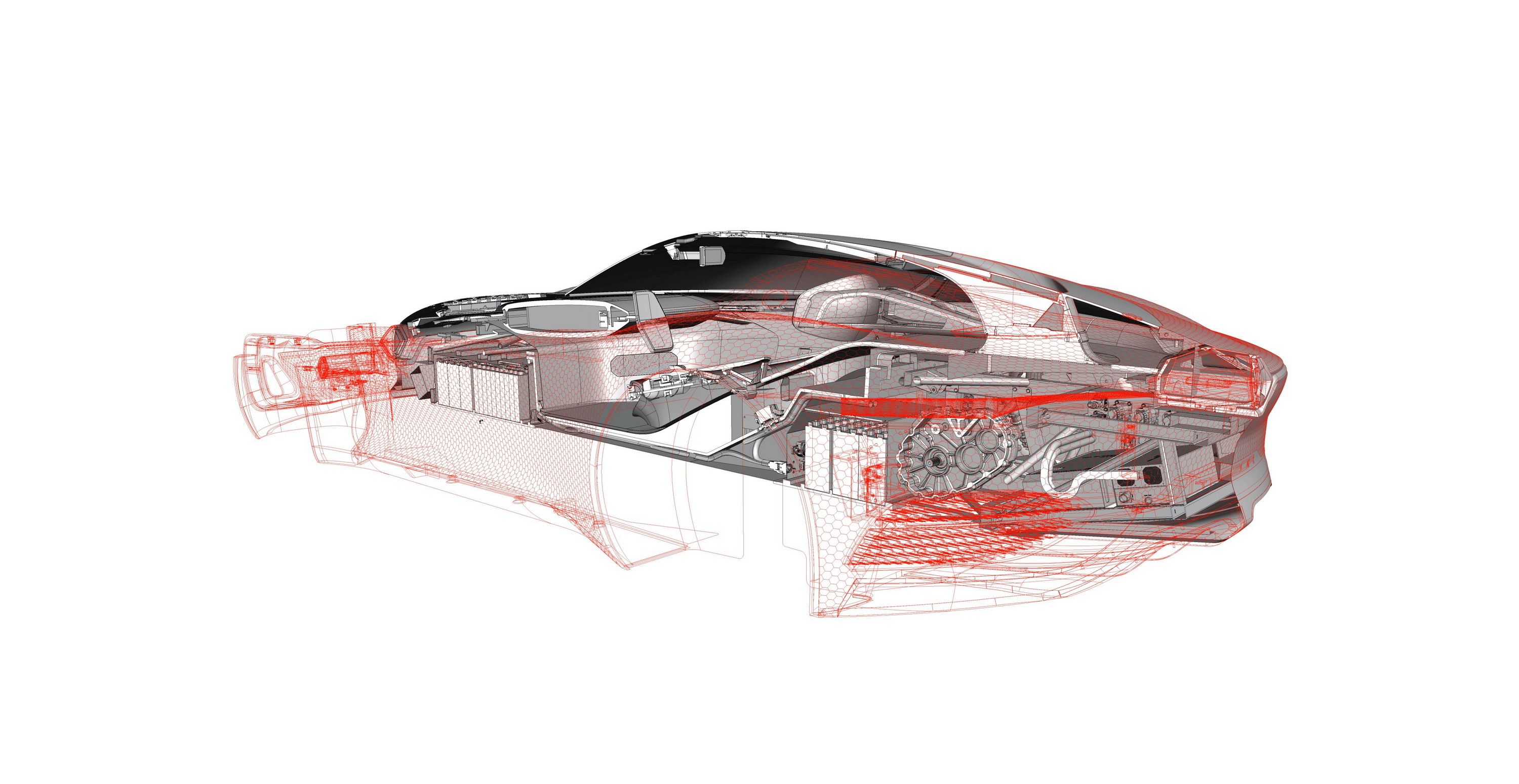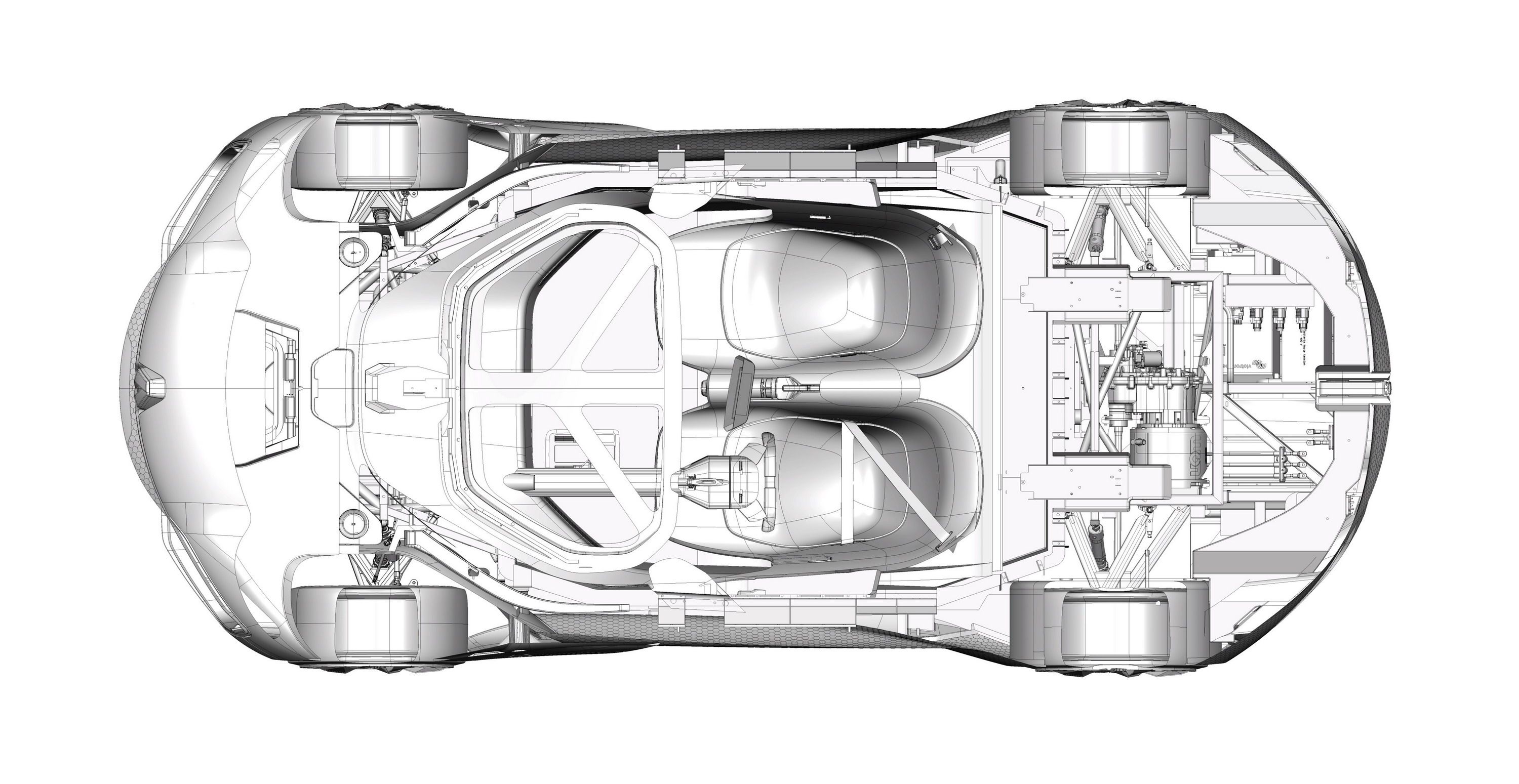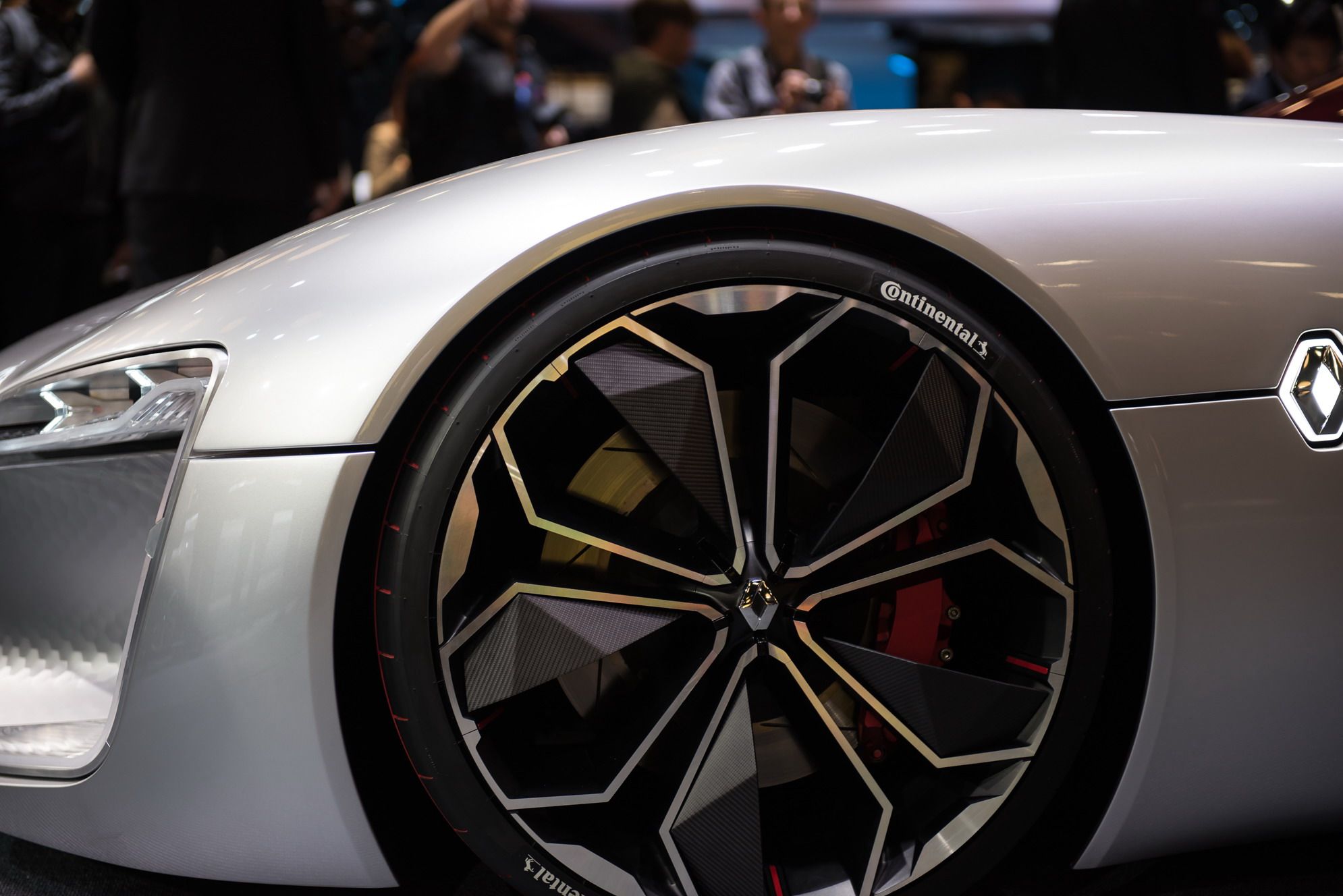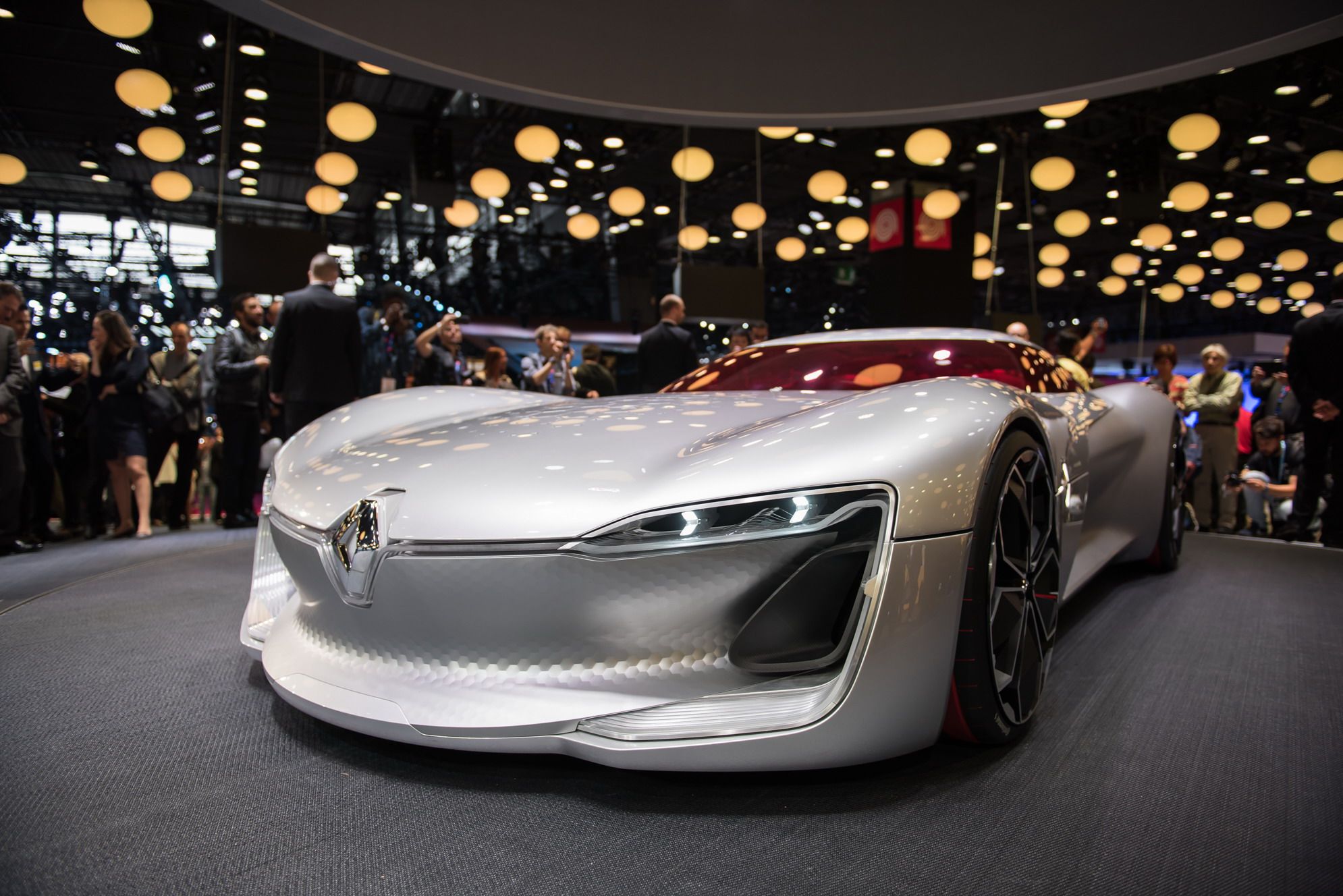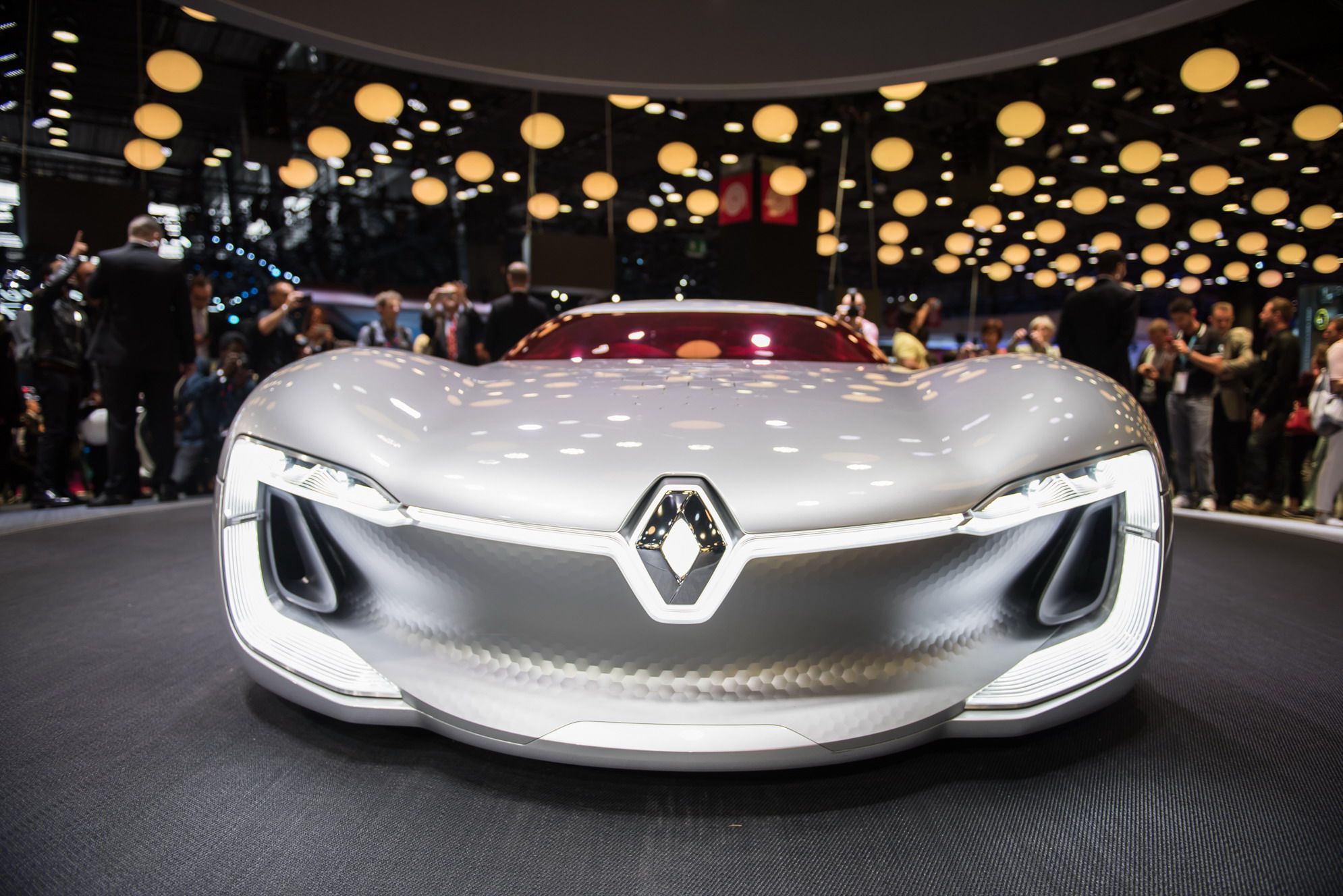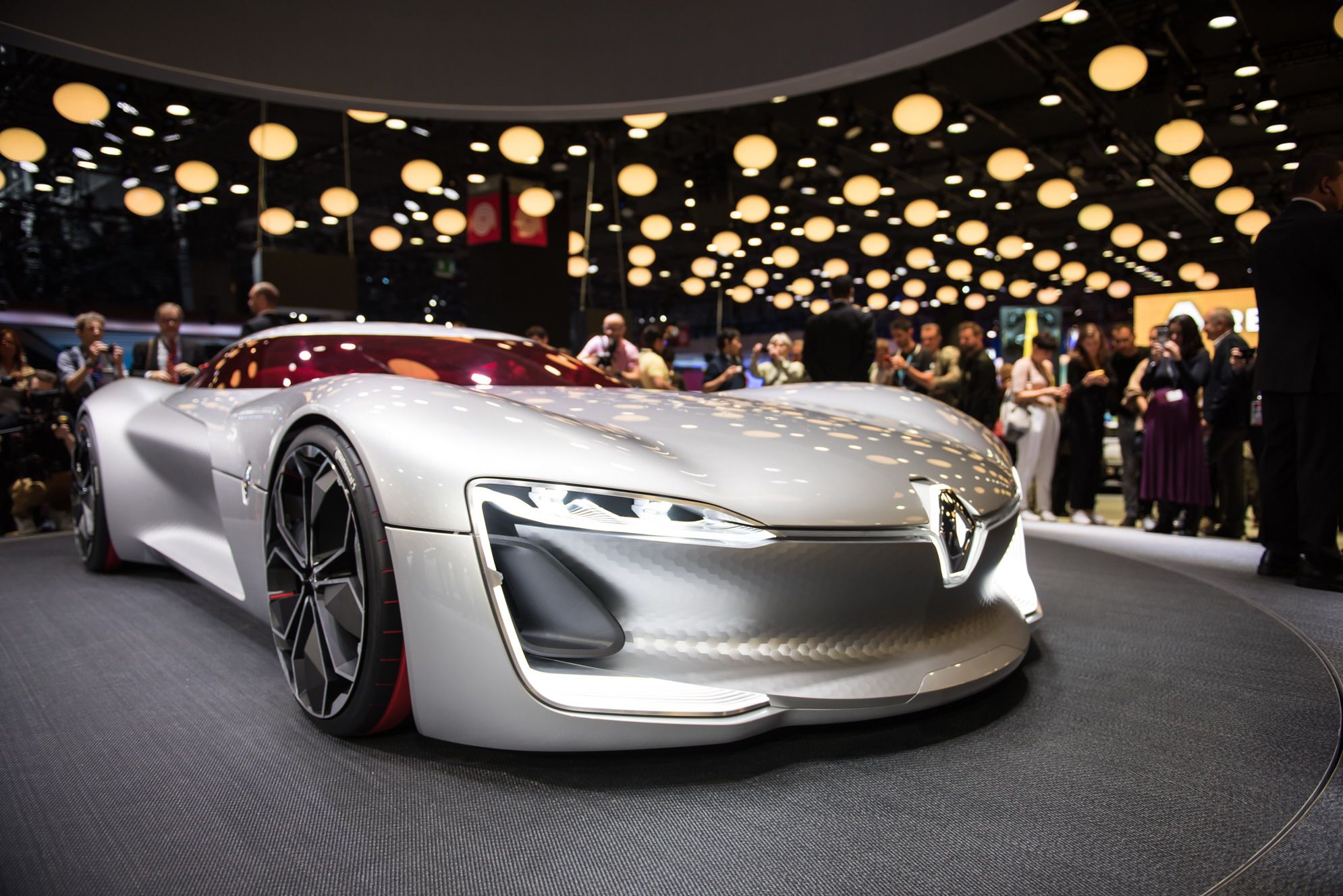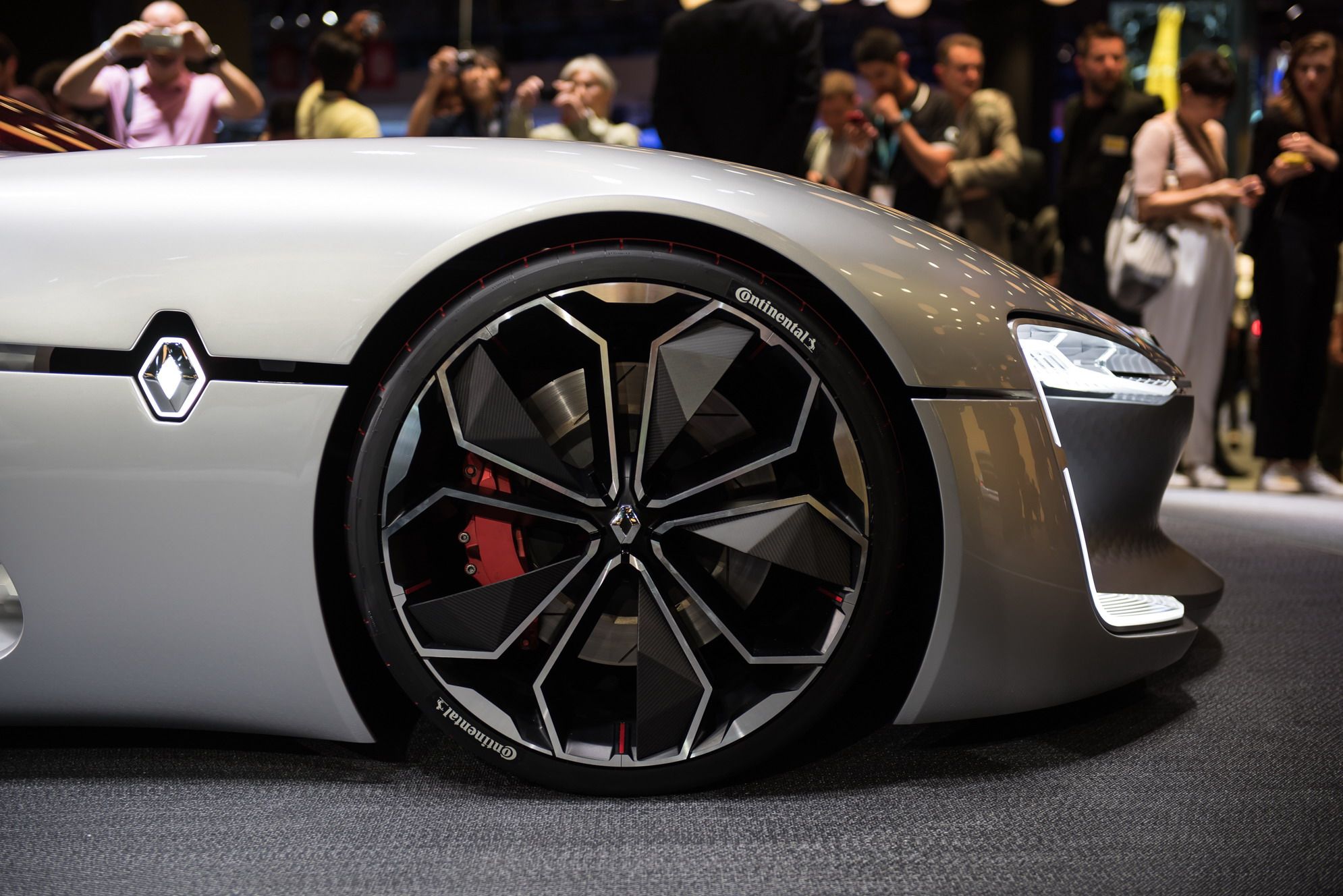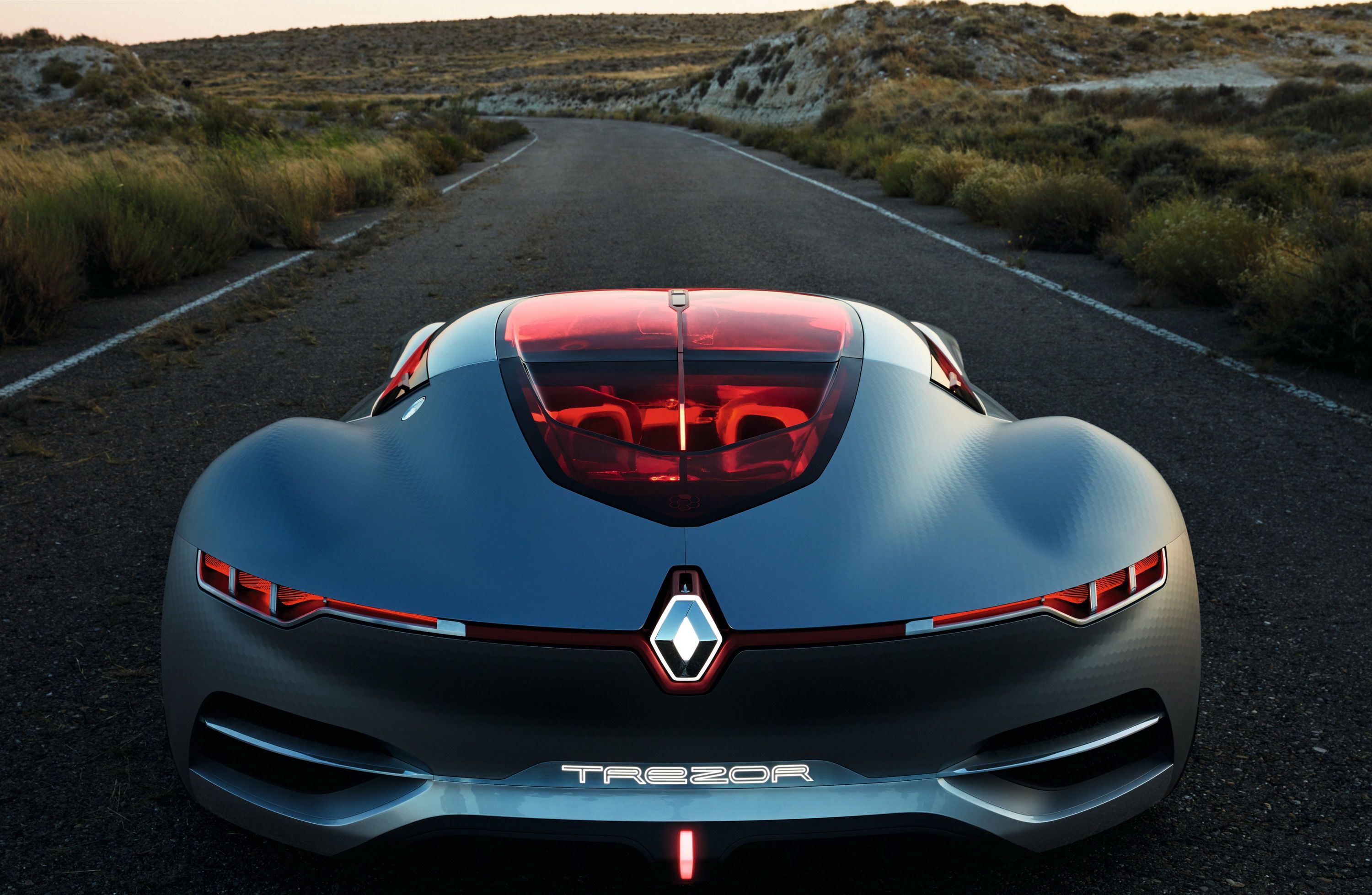So, the biggest days of the Paris Motor Show are over with. Brands like Ford, Volvo, Rolls-Royce, and Bentley all decided to skip out, but over in Renault's little corner of the show sat the Renault Trezor – the all-electric grand tourer that we’ve all be waiting for. To put things simply, this two-seater has 350 horsepower on tap from a pair of batteries that are strategically placed with weight distribution in mind. There’s some interesting technology inside to go with F1-inspired interior styling and a rather interesting way to enter and exit the vehicle.
Laurens van den Acker, the Senior Vice President of Renault's Corporate Design Division, said, “The Renault range has now been completely renewed and upgraded with a spectrum of complementary models, each one of which has its own assertive identity. With the Trezor, we have pursued this renewal by introducing a new lifecycle sequence. This concept car is the fruit of a freedom of expression and prepares the way for the trends we are likely to see in our upcoming vehicles. These trends fall into two categories: French Design and Easy Life.”
So, does the Trezor concept do exactly as Acker claims? Is it a representation of trends that we’ll be seeing in future vehicles? Well, that’s hard to say for sure, but it is essentially an evolution of the styling cues that we saw on the DeZir a few years ago. So, with that said, let’s take a better look at the Trezor and talk a little more about it.
Continue reading for the full story.
2016 Renault Trezor
- Make: Array
- Model: 2016 Renault Trezor
- [do not use] Vehicle Model: Array
Exterior
For a concept, the overall design of the body isn’t as extreme as some might expect. The body sits remarkably low to the ground, and the car itself is just over 3.5-feet tall with an official height of just 42.5 inches. This height gives it a very sporty stance, but also makes it very aerodynamic with a drag coefficient of just 0.22. The body itself is made from lightweight carbon fiber while there are fiber-optic lighting in the rear. Obviously, the car is all electric as there is no radiator grille up front. Instead, the nose is graced with a massive Renault emblem and a front fascia that is predominately covered by an insert that has a texture reminiscent of a golf ball. It’s a little weird to see on a car, but it somehow works nicely. The nose is flanked by those massive air intakes that clearly channel air to the front brakes and possibly the front battery pack to help keep it nice and cool. The headlights are thin, wide, and sleek, while the front fenders take on a smooth but muscular appearance.
Moving over the side profile of the car, it’s painfully evident that this baby is low and ready to run. A large dip in the body where the door leads way to another massive vent from the fender, obviously where air from the massive front intakes exit. This vent doesn’t only serve and an exit, but in theory, should also provide some downforce on the center of the vehicle—you know to keep things from getting too squirrely. That golf-ball-like texture can be seen on the body lines inside this dip. The body lines dissipate as you get closer to the rear and lead the way to the muscular rear haunches that scream, dare I say, “electric muscle.” Those beautiful and massive rims fill the wheel wells just right, leaving no more than an inch between tire and body, while the wraparound taillight units emphasize the car's sporty and speedy personality.
The cockpit is fitted with a single piece of undoubtedly expensive curved glass that is tinted red. This glass is integrated seamlessly into the cockpit and provides for a smooth transition between front and center of the vehicle. Looking down from an elevated position, we can make out more red-tinted glass on the roof that blends into a rear fin of sorts that gets larger as it transitions into the rear deck. That weird seam line that runs along the side and curves upward to cross the roof is there for a reason, by the way. The hold top of the vehicle lifts upward, including the front hood area to allow entry and exit from the vehicle. As Renault puts it, the “one-piece clamshell roof lifts much like a jewelry lid.” That’s a lot of PR talk, however, so I like to say that it opens up more like the cockpit of a fighter jet.
The clever design doesn’t stop with that weird canopy and the gorgeous front end. Around back, the car takes on a fastback-like appearance that screams muscle and supercar at the same time. A big Renault emblem sits right in the middle, while fiber-optic lighting leads the way to those laser taillights that wrap around the rear corners ever so slightly. From the rear view, it is pretty clear that this car is two-piece in design. By that, I mean that the roof and front deck are one piece (that clamshell design,) While most of the side and rear are their own respective single piece. Down below, there is a massive vent on each corner that flanks a rather small rear diffusor. The lack of tailpipes anywhere near the center diffuser hints to the car's all-electric nature, but more about that later. Take a minute to drool over the exterior, then join me in the next section to talk more about the interior.
Interior
Looking at the interior of this all-electric and muscular concept leaves you feeling a bit molested, but not necessarily in a bad way depending on how you look at it. First off, there’s plenty of wood trim that is stained in a rather conductive and engaging red. Notice how you can make out the grain of the wood, even with a duller appearance? That wood encompasses the entire front dash area that takes up, quite literally, one-third of the passenger cabin. That’s not a bad thing, though, as this area includes two cases that fit perfectly into the front deck for storage. They are held in place by leather straps that are also red in color. To the rear, the supports for the rear headrests are also made out of wood, symbolically linking the rear deck to the front.
In the center of the cabin, it’s all about the passengers. The seats are wrapped in a deep red leather and are, according to Renault, inspired by the world of furniture design. They apparently create a “plush, comfortable interior.” As you can see, the contour of the seats on the outside actually wrap up over the lip of the lower body to provide a padded armrest of sorts next to the glass when the cockpit is closed. The steering wheel is rectangular in shape with the corners rounded – a feature that is clearly inspired by the F1 cars we love to see zip around the track.
The interior isn’t just all about deep red leather and red Ash wood. There’s lots of technology here too. While F1 cars still have physical buttons on each spoke, the Trezor takes things to the next level with three small screens. That’s right; there are more screens inside this cabin than you can count on one hand. The screen on the center hub of the steering wheel is rectangular and displays the Renault logo in the middle. Then, there’s a smaller touch screen on each spoke that performs the same general functions of the traditional thumb controls that we’re all so used to seeing in road-going cars.
Ahead of the steering wheel, there is a display screen that serves as an instrument cluster and, based on the display in the images, a driver information center. There looks to be a smaller screen to the left of the digital instrument cluster, however, it doesn’t appear to be turned on or functioning in the images we have here. To the right of the instrument cluster is another large touchscreen that is displaying an odd graphic, the outside temperature, and a symbol that indicates there is an S-curve coming up. Ultimately, this screen would display GPS information in a real-world setting. Down below that display, there is another smaller display that likely serves as the infotainment display when GPS is activated.
Drivetrain
Normally, futuristic concepts like this one have conceptual powertrains that don’t actually function. But, Renault is a self-proclaimed pioneer of electric mobility and claims to be Europe’s “best-setting EV manufacturer.” On top of that, Renault has been contributing to the advancement of Formula E though it’s participation and evolvement, so it shouldn’t come as too much of a surprise that this concept has a functional, all-electric drivetrain. Renault has spilled very few beans as far as performance goes, but it does claim that the electric motor delivers 350 horsepower and 280 pound-feet of torque. Assumingly, that power is routed to the rear wheels, but it’s unclear whether or not the motor is direct drive or if there is a transmission of any kind. Renault claims acceleration to 62 mph takes “less than four seconds.”
But wait, there’s more. This concept has two different battery packs. Instead of having one large battery, Renault has taken the liberty of using two smaller battery packs – one in the front and one in the rear. Renault hasn’t mentioned what the exhaust weight bias is, but the idea is that with two batteries, the weight of the electrical system is split between the front and the rear. Each battery pack has its own cooling system that is optimized by the variable-geometry of the air intakes up front. A brake-operated energy recovery system is also in tow, to help absorb some of the lost kinetic energy dispersed through heat when braking. This system is the same system used on Formula E cars.
When Renault was designing the Trezor, it paid special attention to certain things that help extend range and increase performance. As such, the car has a wide track, with the front track measuring 80.63 inches and the rear measuring 82.91 inches. The overall wheelbase is 109.29 inches. The low body style and ground clearance of just 25 cm gives this car an exceptionally low center of gravity with a drag coefficient of just 0.22 and almost no body roll when cornering. The chassis is composed of a central carbon cell that is ultimately mated to tubular steel frames in the front and rear. The Trezor tips the scales at 3,527 pounds. There is no word has to what the car’s actual range is, but I’m guessing it’s probably in the area of 100 to 120 miles at best.
Conclusion
As we move into the future, automakers need to have the kind of forward thinking that we see in the Trezor Concept. Of course, it’s not completely representative of future cars – I don’t see those furniture-inspired seats or massive wooden dash in a mass-produced car anytime soon, but the technology and the split battery packs are certainly something we’ll be seeing more of in the future. It’s only a matter of time before touchscreens replace physical buttons in cars, but that’s not necessarily a bad thing. We, as humans love technology, and are embracing it more than ever before. The overall setup of the display screens in the Trezor is, I believe, representative of what we’ll see in cars over the next decade.
The exterior design is a little wild, but it’s fitting for a supercar. Then again, 15 or 20 years down the road, this could end up being an everyday style – after all, most futuristic movies depict cars that look similar, so you never know. All told, this is probably the best concept to come out of Paris, with the exception of the Civic Type R Concept, but we’ve been waiting to see that thing for a long time. Good Job, Renault – this is one Concept that you nailed.

